|
Week
ending 25th October:
Musselburgh
This week was more like a normal Sunday, albeit without my wee pal,
John, and without the much
missed Morrisons’ breakfast (replaced by a tuna salad). We
have a saying that “Musselburgh
always delivers” so I was hoping that would be true as I set
off for the Scrapes. The signs were
good. There was plenty of bird noise coming from the reserve and
Greylags were circling
overhead. From the middle hide I could see that the geese were still
frisky and a quick scan gave
me a sense of optimism since I could see many pockets of birds all over
the reserve. The usual
suspects were all there including Oystercatchers and Redshanks.
| Oystercatcher |
Redshank |
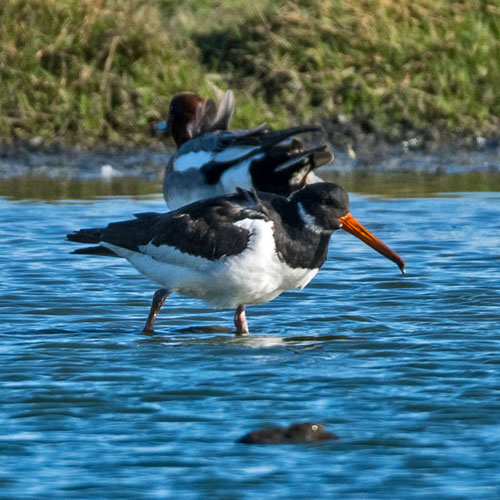 |
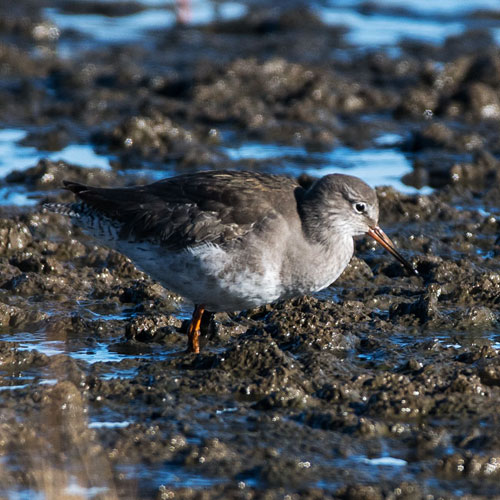 |
A large flock of Redshanks and a few feeding Dunlin were to the right
of the hide.
There were also a couple of large flocks of very active Lapwing
behaving as Lapwings do,
the whole flock taking to the air at least once every half hour at the
least sign of danger. The back
scrape had a large flock of Bar-tailed Godwits and a few were much
closer foraging in the short
grasses.
I spotted a pair of white Greylag hybrids amongst the Greylag
flock, probably Greylag X
Canada Goose. I noticed a few Teal, our smallest native duck, on the
scrapes making their familiar
whistling calls as they mingled with the Lapwings. There were also
flocks of feeding Starlings around
the edges of the scrapes. Recent reports had described seeing murmurations of
Starlings
around sunset.
Another dabbling duck well-represented on the scrapes were Wigeon, the
drake very easily
identified by his light orange crown. Near them, three Dunlins
had moved away from the
sleeping Redshanks to, for me, a better-illuminated scrape. I think I
also managed to snap a very
similar-looking wader, a Curlew
Sandpiper.
| Drake Teal |
Female Teal |
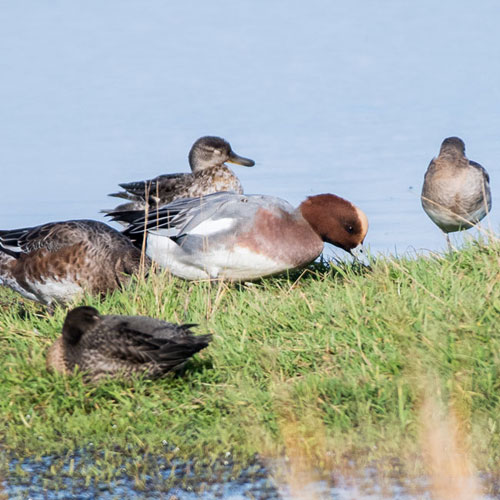 |
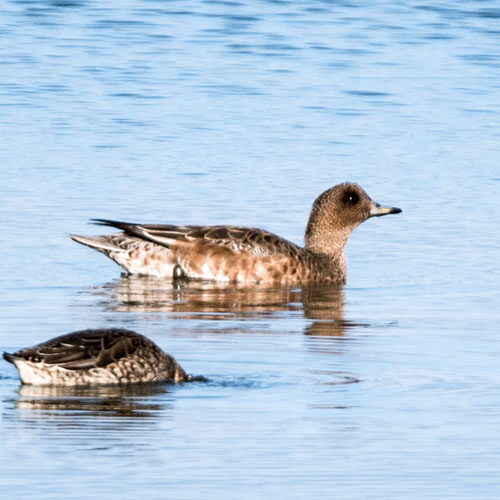 |
| Dunlin |
Curlew Sandpiper |
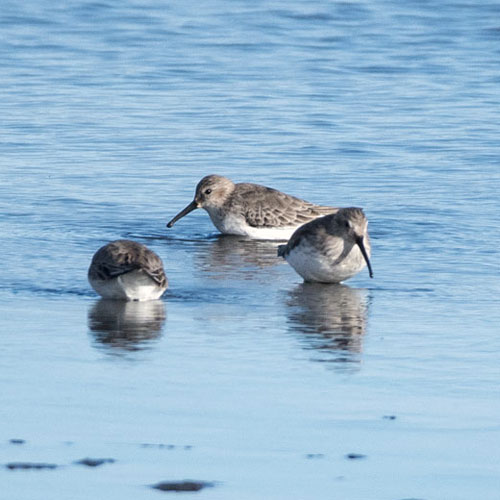 |
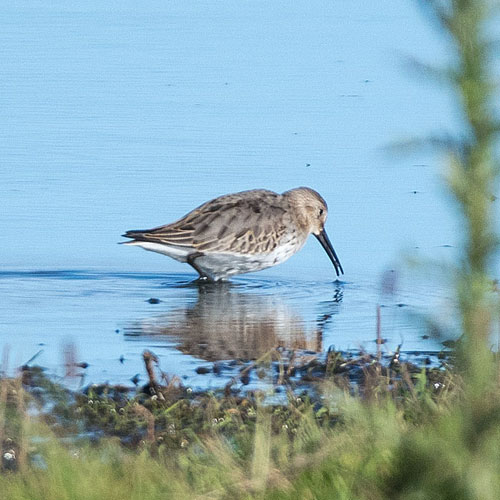 |
I next decided to walk along the sea front to the mouth of the Esk.
There had been reports of
sightings of a pair of Snow
Buntings , so I had eyes peeled for those. My first
sighting on
surveying the choppy waters of the Forth was of a fishing Shag
stretching/drying its wings. I also
managed a flight shot of one of the very many Oystercatchers that were,
because the tide had
lowered, relocating from the Scrapes to the now exposed sands at the
mouth of the Esk. As I
watched them land there I snapped a Carrion Crow and a Turnstone that
were on boulders by the
shore
| Shag |
Oystercatcher |
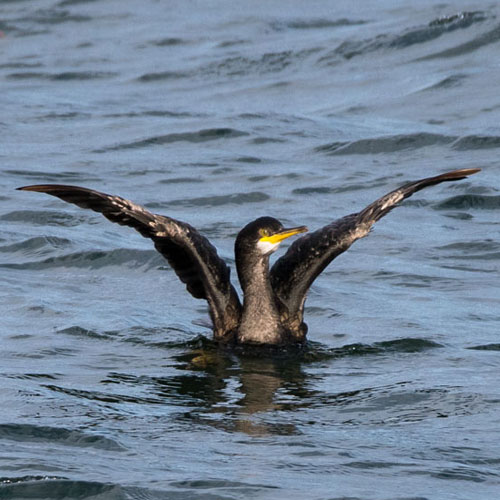 |
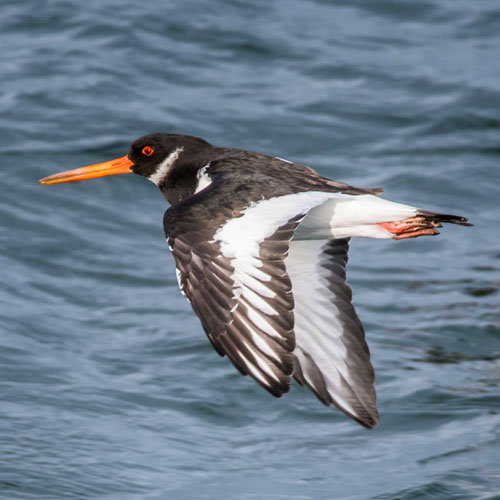 |
| Carrion Crow |
Turnstone |
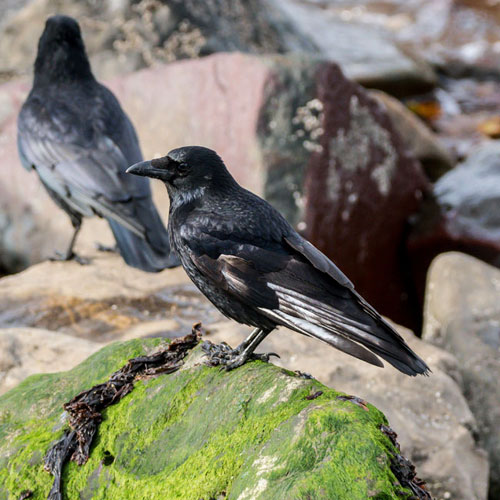 |
 |
An incoming flock of ducks caught my eye. They were Gadwalls
flying in from the east. I
don’t remember ever having seen these at Musselburgh. While
watching the Gadwalls I glimpsed
a pair of winter plumage Slavonian
Grebes diving about 150m offshore. I waited to see if
they would venture further in, to no avail. One bird that did turn up
below the sea wall was a very
obliging female
Long-tailed Duck.
| Gadwall |
Slavonian Grebe |
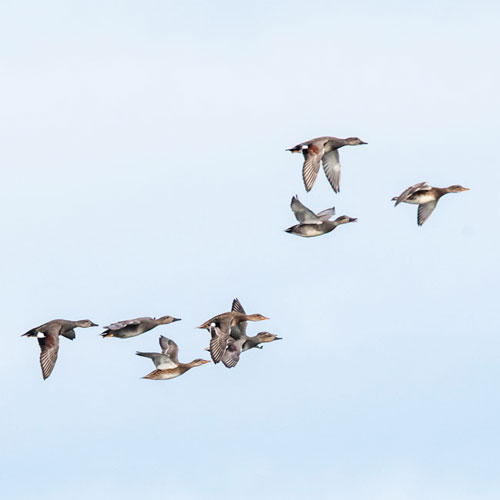 |
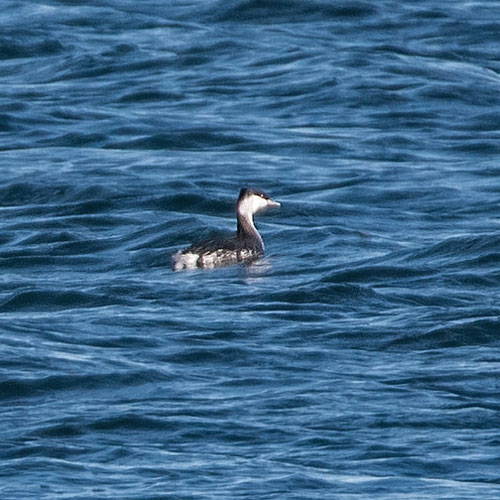 |
| Curlew |
Female Long - tailed Duck |
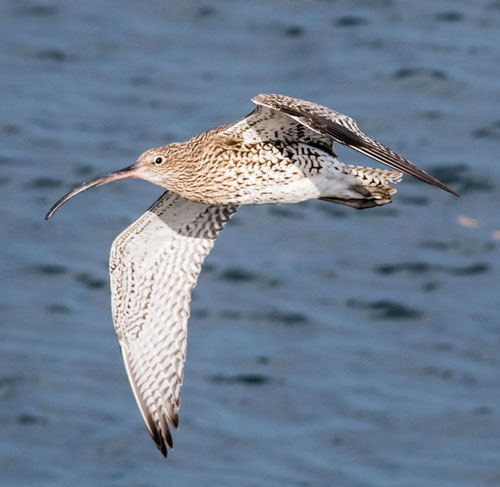 |
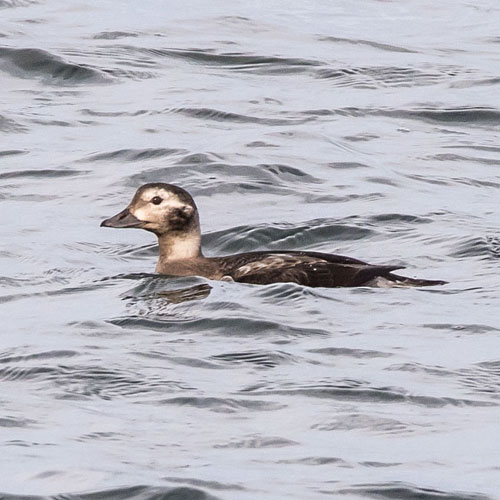 |
At the Esk mouth I managed shots of a number of birds that were feeding
on or near the shore
close to the sea wall. These included a Goosander and Redshank. I was
pleased to see that some
of the passing Gadwall had stopped for breath, albeit in worsening
light. A ubiquitous
Oystercatcher was poking about in the seaweed without much success as
far as I could see.
| Goosander |
Redshank |
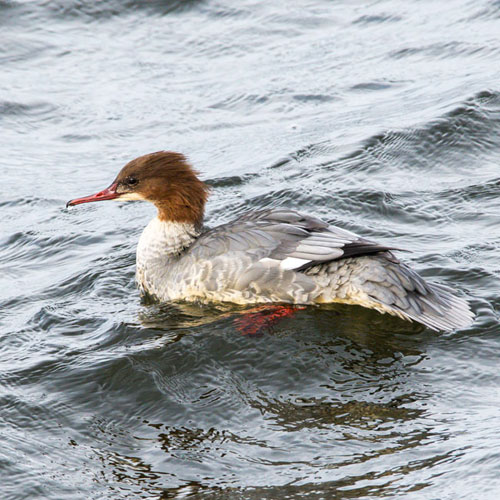 |
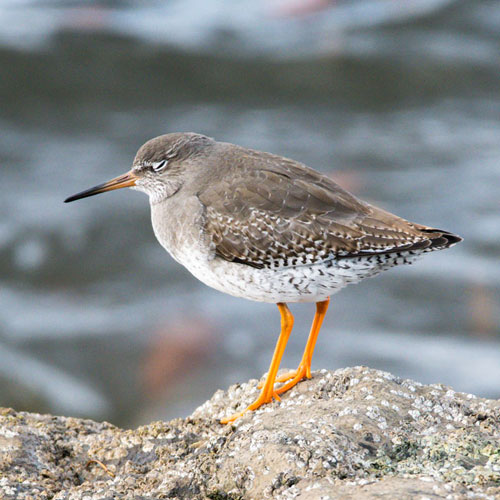 |
| Gadwall |
Oystercatcher |
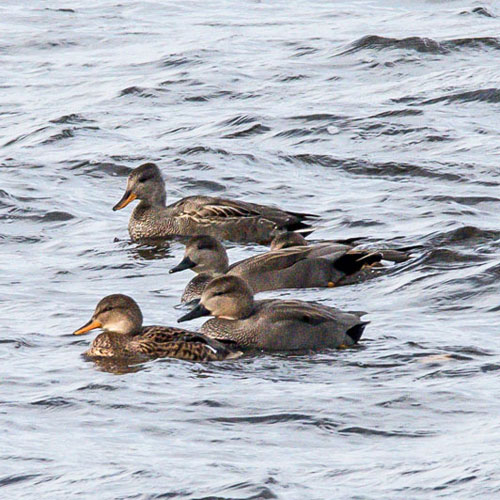 |
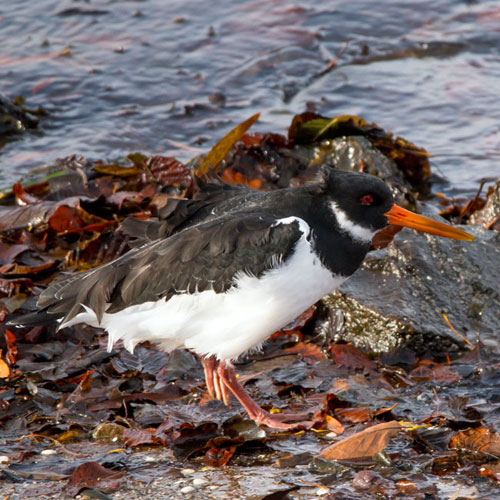 |
I was photographing a pair of Rock Pipits that were hiding in the
ever-darkening shadow of the
sea wall when a flurry of activity descended on the sea wall. Not Snow
Buntings, sadly, but a
small flock of Twite .
I always look for their wee yellow beaks as a sure means of
identification, although their size, shape, colour and behaviour as a
group make them fairly
distinctive.
As I retraced my steps back towards the Scrapes I came across a
solitary Velvet
Scoter
diving for crabs about 30m from the sea wall. I managed some fairly
nice shots despite the poor
light.
| Rock Pipit |
Twite |
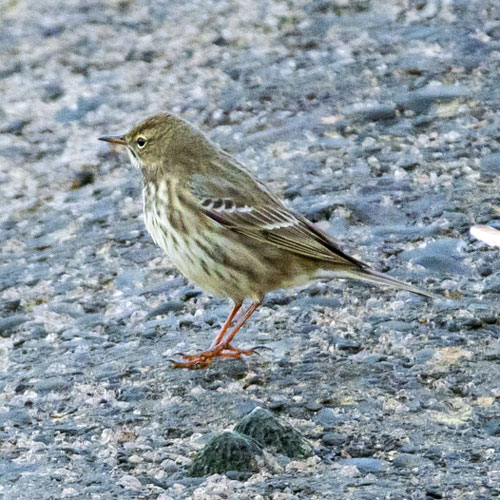 |
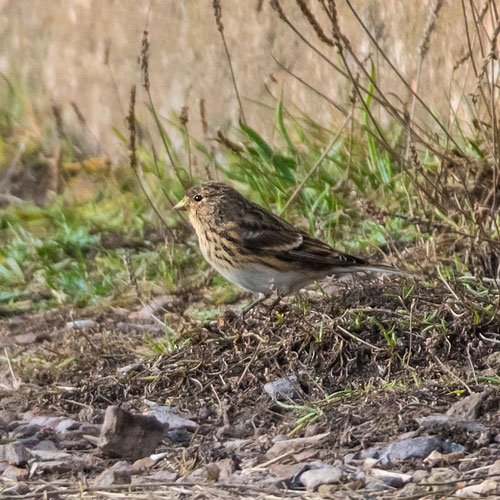 |
As I took pictures of the Scoter, a line of Turnstones flew west
towards the mouth of the Esk.
My final picture of the Velvet Scoter shows it with an unfortunate crab
in its beak. As I neared the
end of the Scrapes boundary fence, standing at the sea wall, I
photographed a female Eider
roosting on the water very close to the shore. Maybe it was unwell. I
ended the visit with a
pleasing picture of a Common Gull posing on a boulder. I had, though,
dipped on the Snow
Buntings. At one stage I did get a glimpse of the pair when they
appeared from over the sea wall
but they didn’t settle due to the foot-fall beside the wall.
The photo below is one I took in the
same area almost exactly four
years ago.
| Velvet Scoter |
Female Eider |
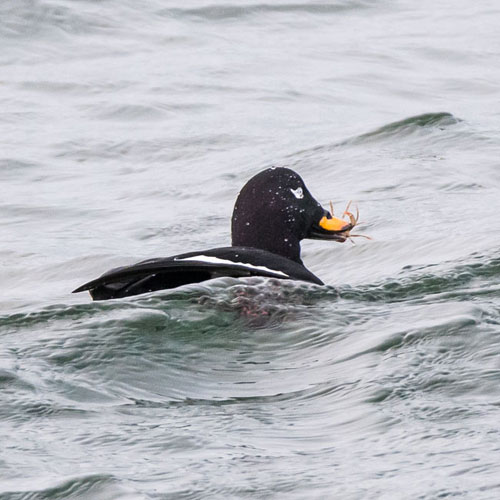 |
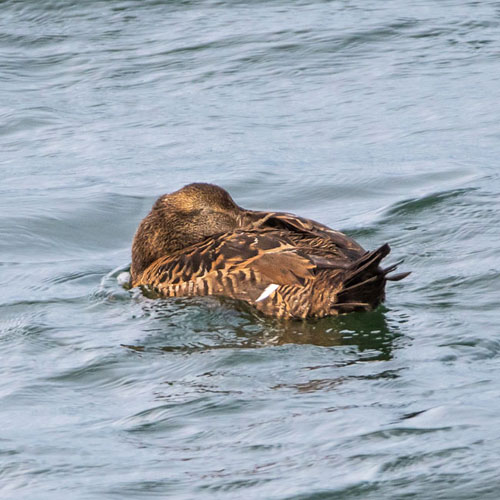 |
| Common Gull |
Snow Bunting |
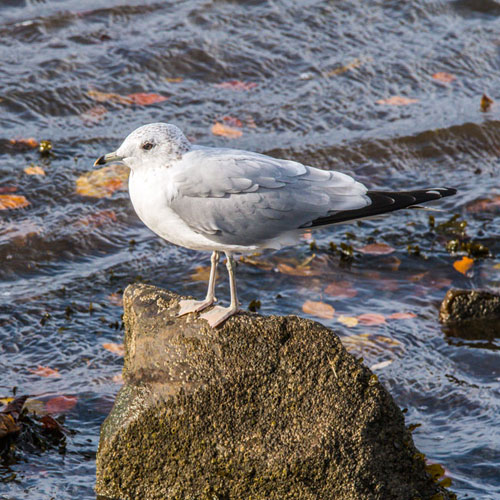 |
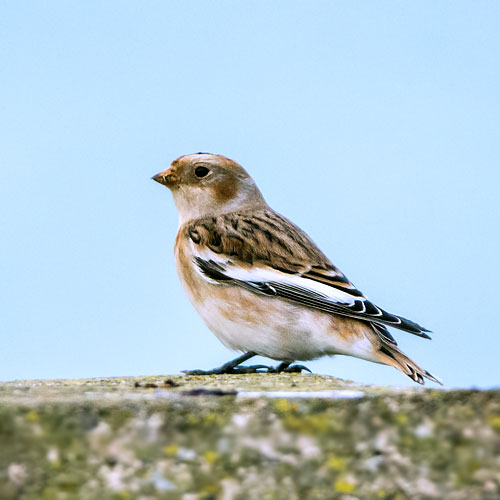 |
It had been a very pleasing visit, and I left with photos of 24 bird
species, so I would say
Musselburgh had indeed delivered.
Week ending 18th October 2020: Strathclyde Park
Something a bit different this
week. Strathclyde
Country Park is a place where I enjoy
watching for birds while tramping the 3.5 mile circuit of the
Loch. My aim in this blog
therefore is to list some of my sightings in the various sections of
the Park. I’ve restricted my
descriptions to areas adjacent to the Loch and will leave the wooded
zones for another day.
North
end of Loch
The grassy patch and bushes at the rowing starting bays usually contain
many birds such as
Mute Swans, Mallards and Woodpigeons. Crows and Jackdaws can also be
seen there (and in all
areas of the park).
| Mute Swan |
Drake Mallard |
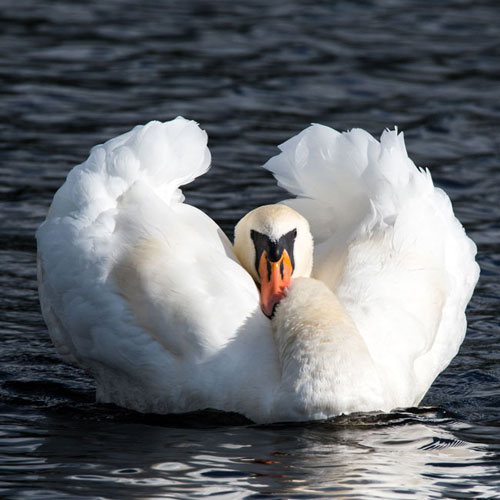 |
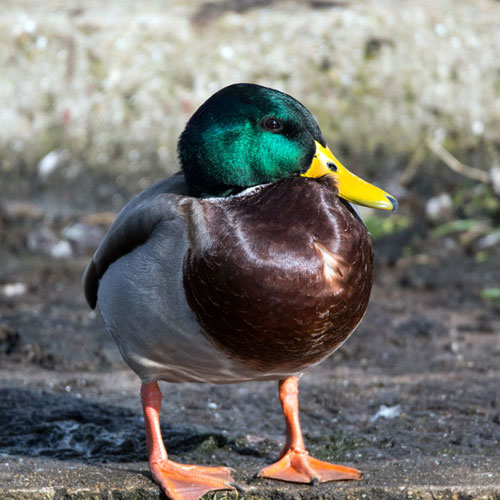 |
| Female Mallard |
Wood Pigeon |
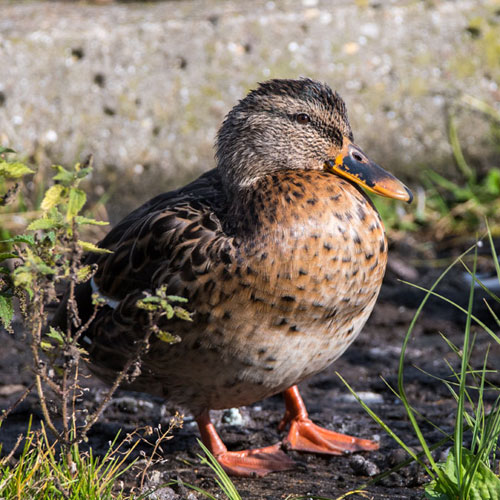 |
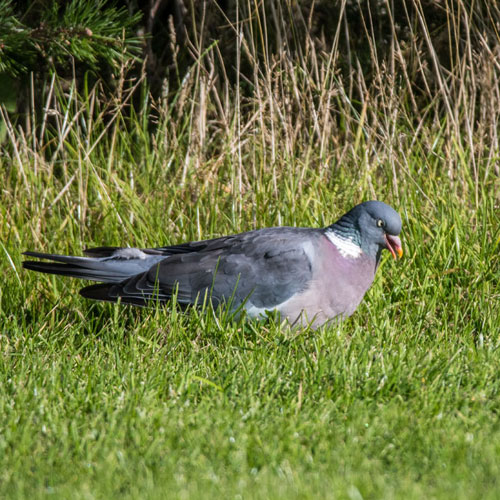 |
Moorhens and Coots,
members of the Rail family, are frequently seen there,
especially in
the “moat”. Grey Herons are also not uncommon, as
they hunt the shallows for fish and
amphibians. The bushes are good for small birds such as Robins, Great
Tit, Blue Tit, Coal Tit,
Goldfinch, Chaffinch and Greenfinch. Lapwings are also seen throughout
the year (but not in the
times I collected these pictures).
| Moorhen |
Coot |
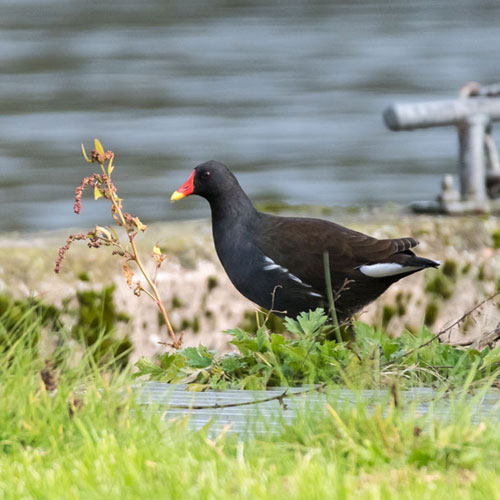 |
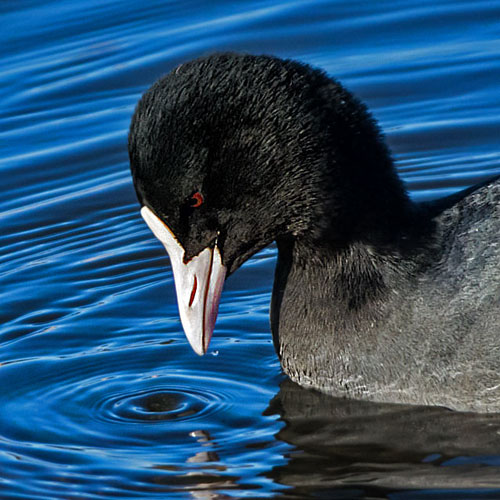 |
| Grey Heron |
Blackbird |
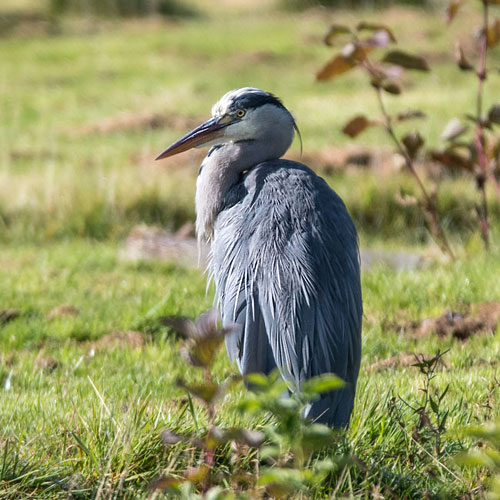 |
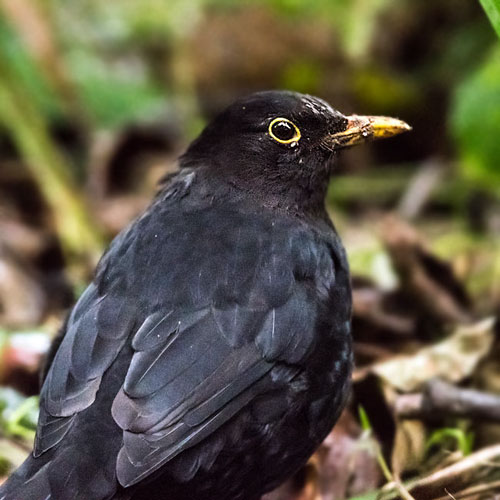 |
Watersports
Centre and car parks.
The main species of gull
(seen in all areas) of the Loch are Black-headed Gull, Lesser
Blackbacked Gull and Common Gulls. They tend to congregate around areas
where visitors feed them
bread, such as Car Park 4 where cars can park closest to the Lochside.
| Black - headed Gull |
1st Cycle Black - headed Gull |
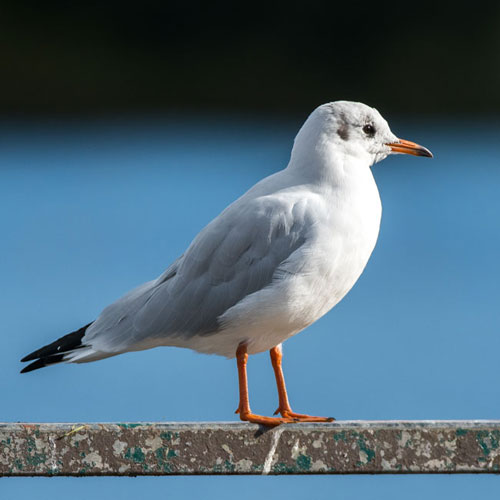 |
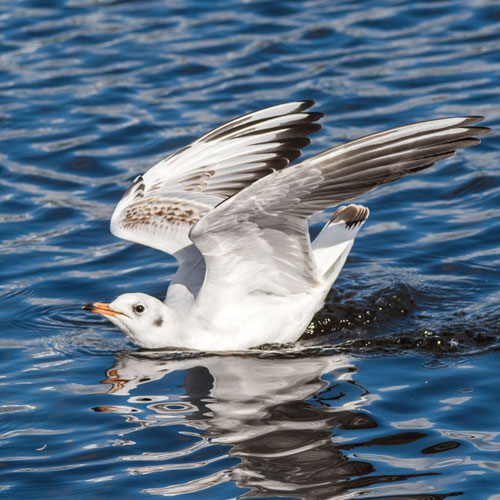 |
| Lesser Black - backed Gull |
Common Gull |
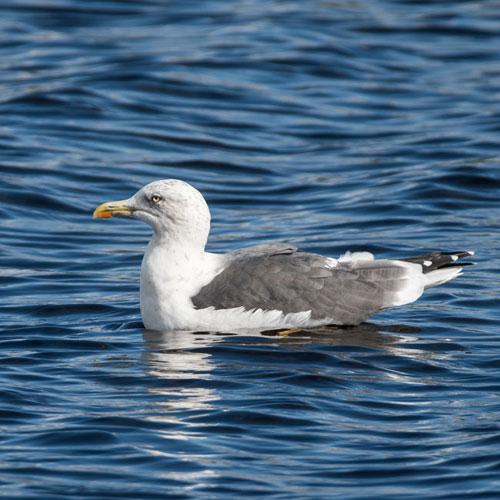 |
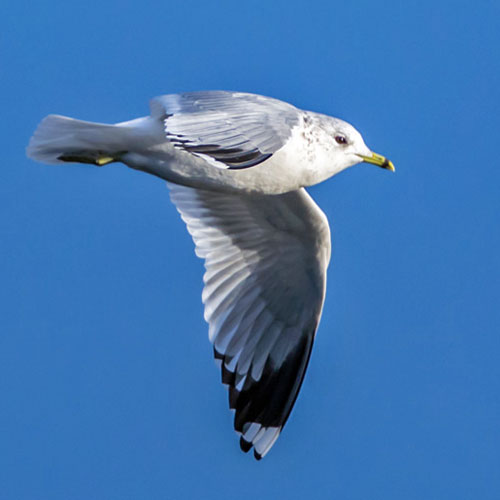 |
The Park has a thriving colony of Cormorants.
The sight of as many as 50 fishing Cormorants
sweeping down the Loch is truly impressive. One wonders how the fish
population can sustain
such a large number of predators.
When I first walked Strathclyde Park, some 30 years ago, the most
common large bird was
definitely the Mute Swan. However, in recent years Greylag
Geese have outnumbered the
Swans (as many walkers will attest having trodden through the
excrement-covered footpaths).
Lately I’ve noticed a couple of Greylag hybrids - one crossed
with a Swan Goose and also a white
Domestic Greylag.
| Swan Goose x Greylag Goose |
White Domesticated Greylag |
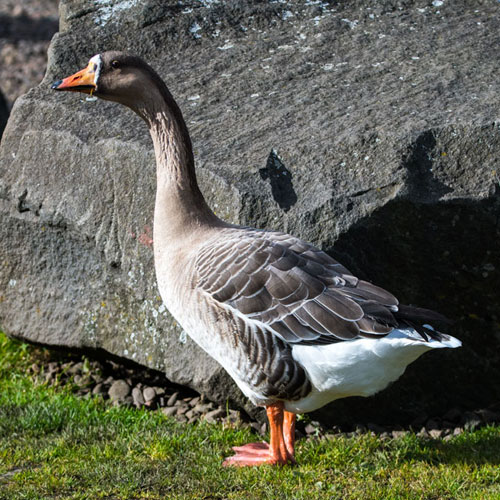 |
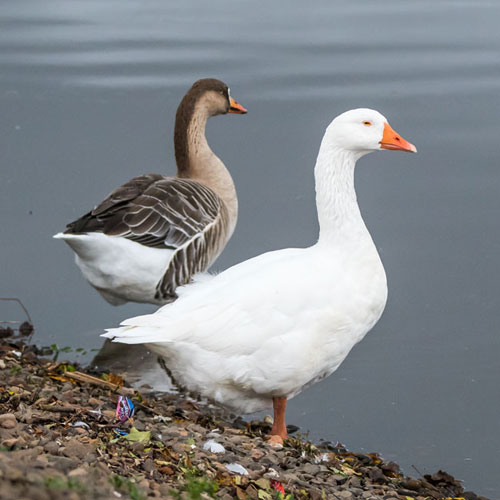 |
I’ve also noticed a single, rather sick-looking Canada Goose
with the other geese. The other day I
came across a juvenile Grey Heron fishing in one of the four weirs that
help control Loch water
levels. Maybe it was hoping for a Salmon.
| Canada Goose |
Grey Heron |
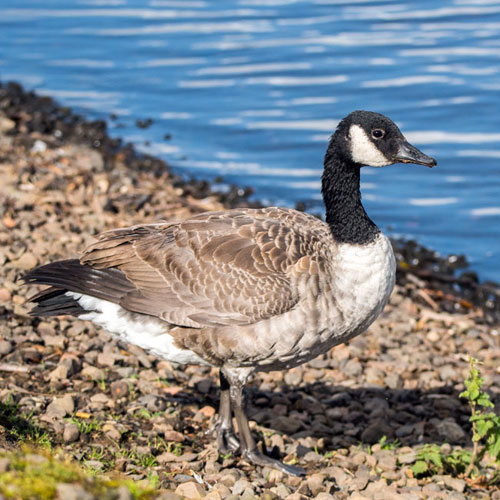 |
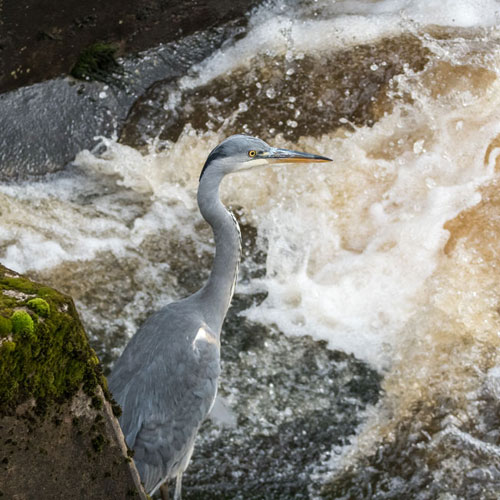 |
Site of the Roman Fort
The site of the Roman
Fort is a rather less busy part of the Park.
Although the ruin has
been visited
several times since its discovery in 1925, the area is scrub with few
of the
fort’s features obvious to the untrained eye. However, nearby
there is a very impressive excavation
of a Roman
Bathhouse that was opened to the public in the
1980s.
Sitting at the edge of the scrub amongst the Hawthorns, sun behind, I
was lucky enough to see
the birds below all within about half an hour. A singing Robin and a
Blue Tit foraging for
caterpillars were first to show in the berry-rich bushes. Then some
skittish Redwing flew in, fresh
from their 500+ mile flights from Northern Europe. These small thrushes
spend the winter in the
UK and survive on berries and worms. To my delight, a brightly
coloured, acorn-carrying Jay
swooped onto a tall tree some 50m away and rested there for a few
minutes.
| Robin |
Blue Tit |
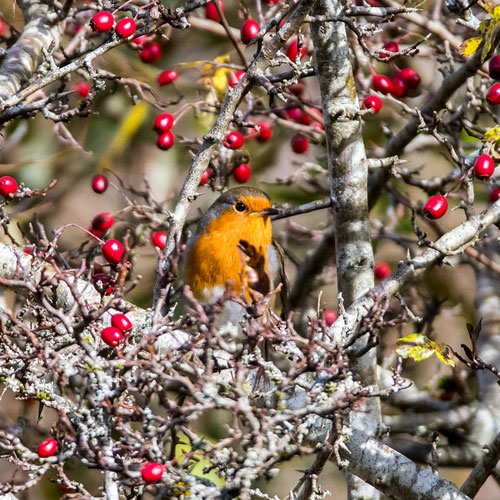 |
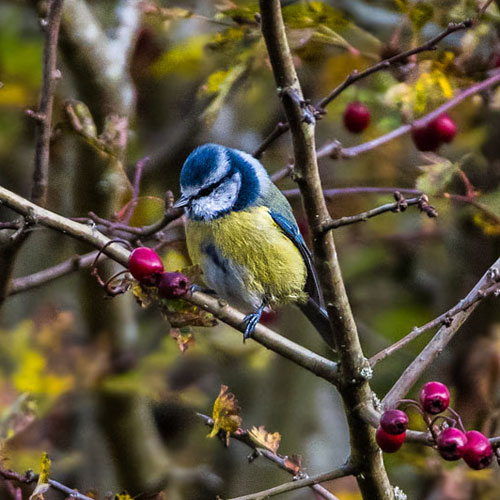 |
| Redwing |
Jay |
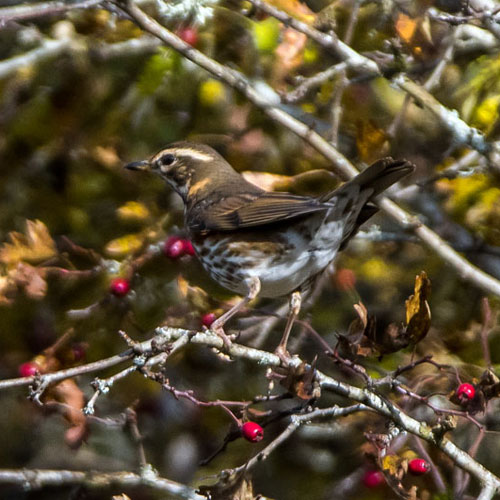 |
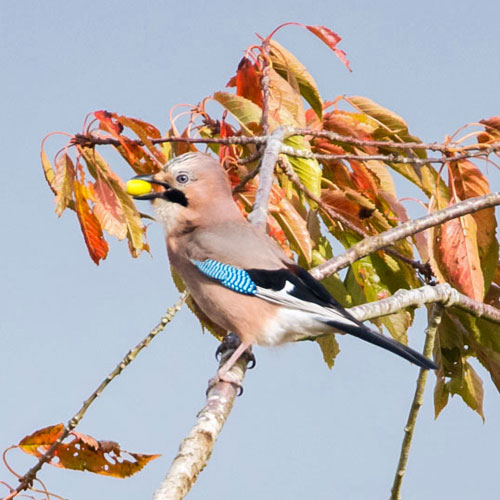 |
Next, a Chaffinch appeared on a much closer tree. It was very
accommodating, allowing me to
rattle off a few shots before it moved on. In the same tree, a Wren
then showed up for a few
seconds, long enough for a quick snap. Perhaps the most impressive
sight I’ve seen at the Fort
was a clash between a pair of aerobatic Buzzards, probably in dispute
over the nearby female (not
in shot).
| Chaffinch |
Wren |
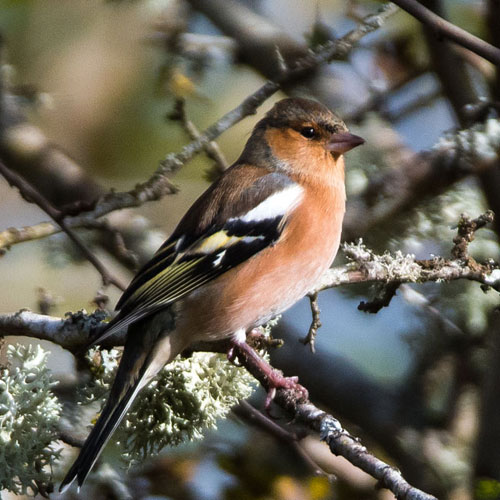 |
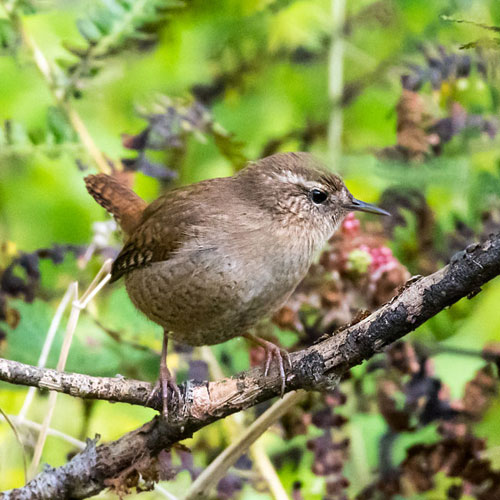 |
Roman Bathhouse to the dipping pond
The lochside adjacent to the low hill where the fort is located is a
great place to view a number of
water birds, such as Mallards, Tufted Ducks and Little Grebes.
Cormorants perch on partially submerged tree logs.
If the the sun is shining from the south-east Cormorants drying their
wings make a magnificent
sight. Juvenile Cormorants are identifiable by their white fronts. Of
course it is always possible to
see passerines (perching birds) such as Reed
Buntings, Finches
and Tits.
| Cormorant |
Reed Bunting |
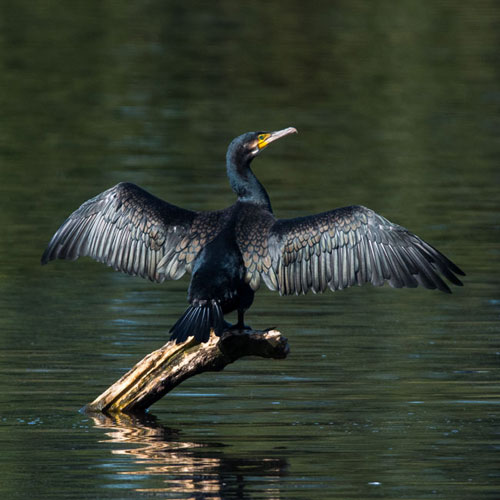 |
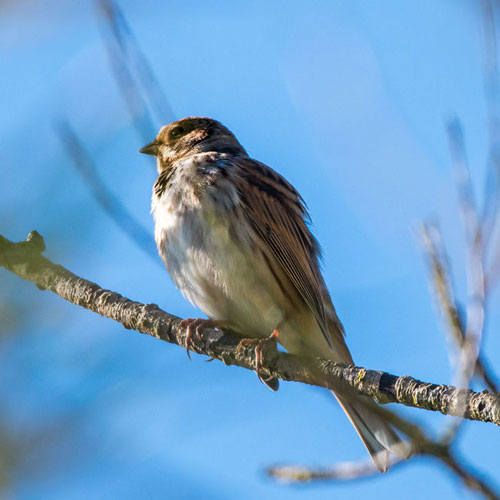 |
| Female
Bullfinch |
Male Bullfinch |
South
Calder River mouth to Bothwellhaugh
Just north of the mouth of the South Calder River can be a good place
to see Tufted ducks.
The juvenile Goldfinch in the picture below popped onto some seed-heads
while I was scanning
the loch for the Tufted Ducks. The northwest edges of the loch are
close to trees that host a
colony of Carrion Crows. I have seen a few Hooded Crow X Carrion Crow
hybrids near the
Foreshore car park. They have strong light grey patches on their
plumages. Jackdaws, smaller
members of the Corvid family,
can also be found there. They are opportunists, ever-watchful
for food waste left by the many park users.
| Goldfinch |
Carrion Crow |
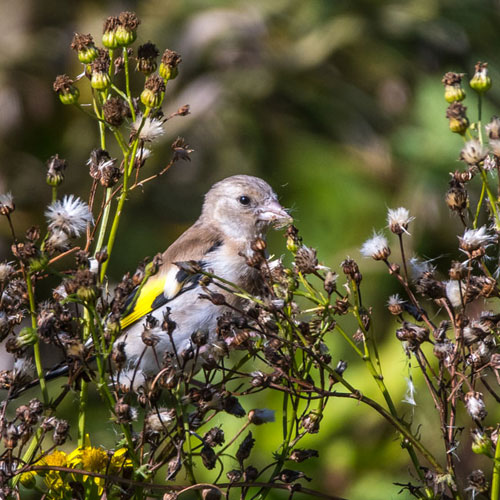 |
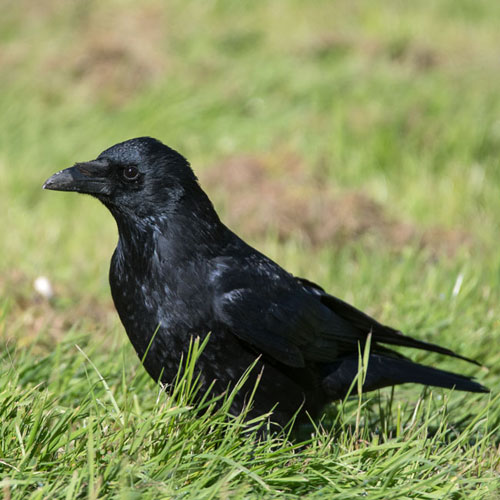 |
| Hooded
Crow x Carion Crow |
Jackdaw |
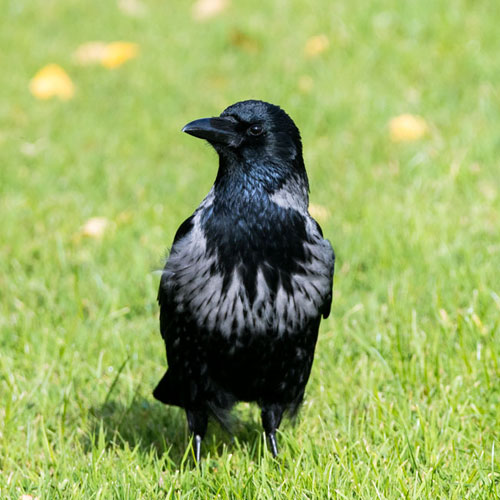 |
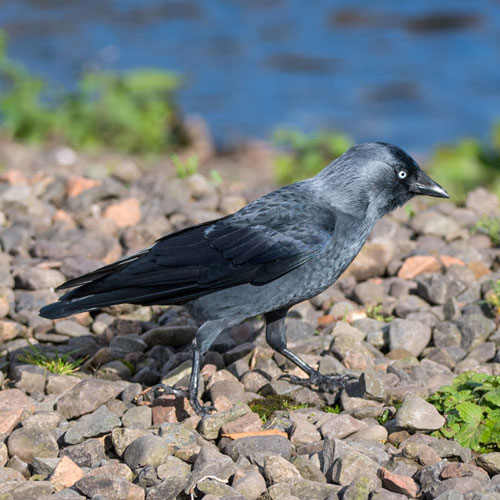 |
Access
road to Caravan Park
The trees that line the road to the Caravan Park are also rich in
birdlife. A quick pass yielded
pictures of a Wren with small caterpillar, a Magpie and a big
Woodpigeon.
| Wren |
Magpie |
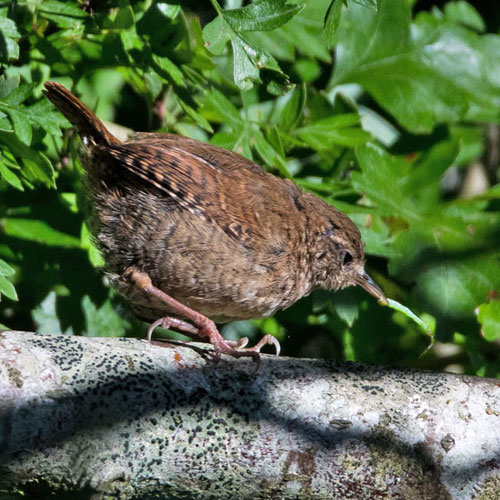 |
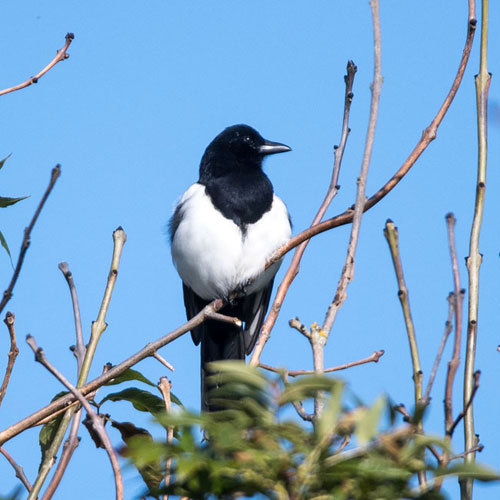 |
I hope I conveyed my impressions of Strathclyde Park as a place to see
some common birds.
Please note that I have not mentioned the many less-common visiting
birds that occasionally turn
up, such as the Ring-billed Gull, Mediterranean Gull, Golden Plovers,
Siskins etc …. but I’m
keeping those for a future blog.
Week ending 11th October 2020: Aberlady ( Map)
This week I managed a quick visit
to Aberlady
LNR (Web Site) , catching a sunny afternoon in what
had been a rather rainy week. As I crossed the wooden bridge that takes
visitors across the Peffer
Burn and into the reserve, I observed Redshanks and Curlews making the
most of the low tide
conditions to fill their bellies with juicy invertebrates. A large
flock of Wigeon
were also fairly
close to the bridge, enabling me to catch some nice, well-lit shots.
| Redshank |
Curlew |
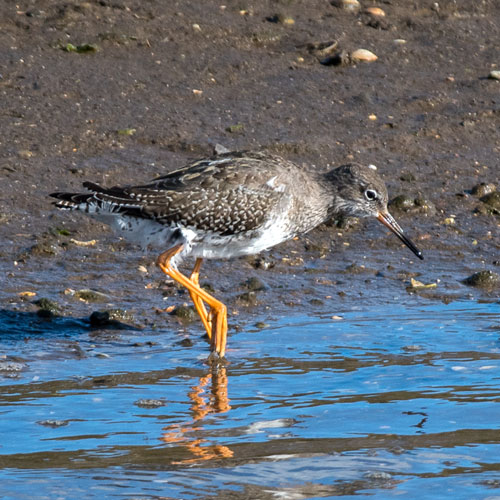 |
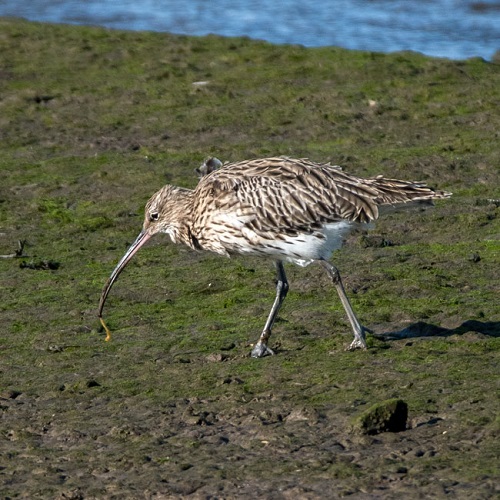 |
I could see that the exposed sands of Aberlady Bay held a scattering of
feeding birds and, 30
miles to the west, were the famous Forth bridges
shimmering in the strong sunlight.
A busy Oystercatcher caught my eye as I stepped off the wooden bridge,
and in hawthorn bushes
some noisy Great
Tits were playing hide and seek. I saw quite a few
Magpies on my visit
although their ever-watchful nature and high intelligence made them
difficult to approach. I
snapped a late Buff-tailed
Bumblebee on one of the many violet and yellow
Michaelmas
Daisies that lined much of the footpath.
| Oystercatcher |
Great Tit |
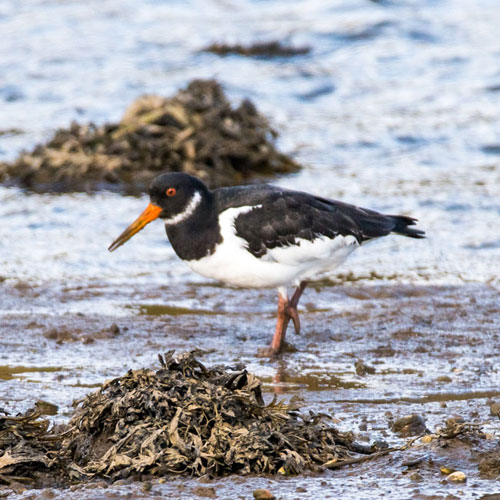 |
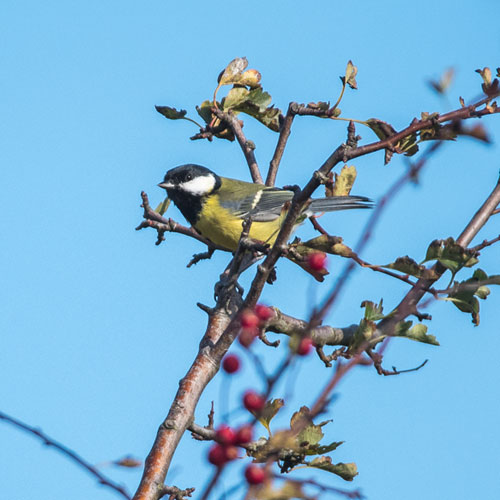 |
| Magpie |
Buff - tailed Bumblebee |
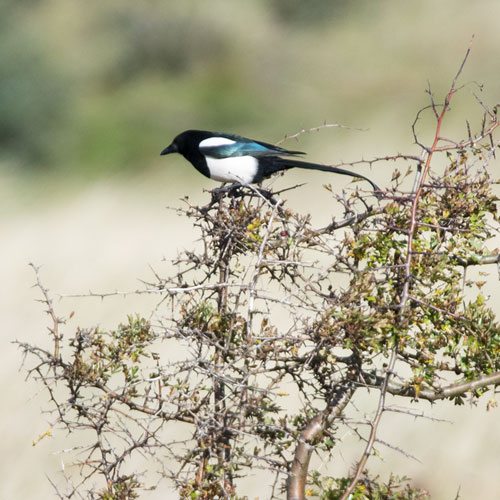 |
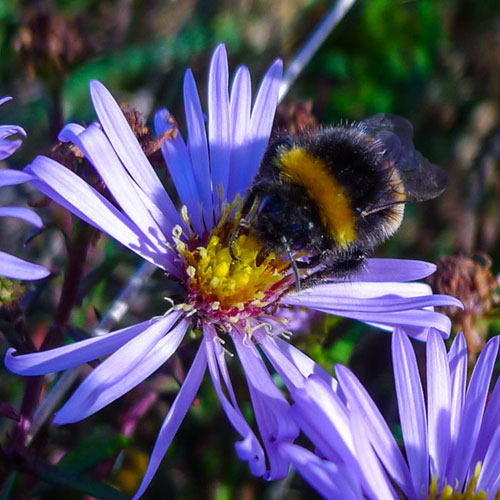 |
As I reached the small, and sadly, birdless Marr Loch I heard the
unmistakable sound of
approaching geese. I looked up to see around 50 of an estimated 1200 Pink-footed
Geese
that had arrived in Aberlady Bay that day.
The geese flew in from the east to west, veering north over Aberlady
before landing on the east
side of the Bay. To the west of Marr Loch I could see over the Bay to
Kilspindie Golf course with
Arthur’s Seat in the background. I moved along the path to a
large area of Sea
Buckthorn (hidden in the midst of which appears to
hold some sort of waste installation). In previous visits I
have found thrushes such as Redwings and Fieldfares but they had not
arrived there on Friday. I
did though catch a flight shot of a Woodpigeon and being surrounded by
the bushes loaded with
bright orange Buckthorn berries was mesmerising.
| Pink - footed Goose |
Arthur's Seat |
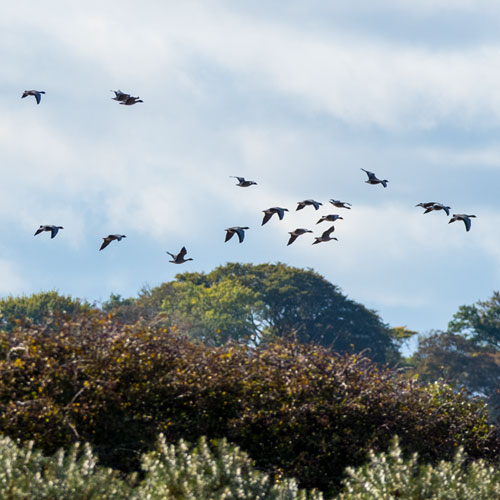 |
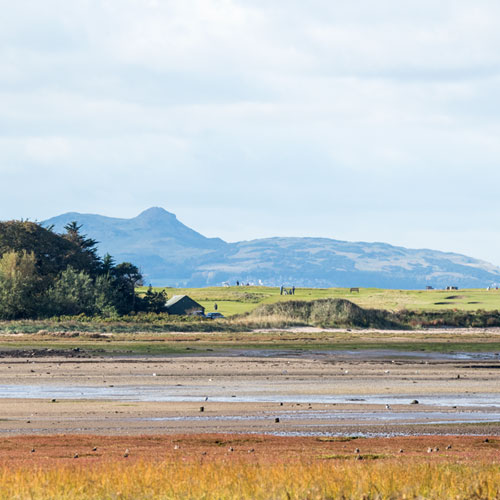 |
| Wood Pigeon |
Sea Buckthorn |
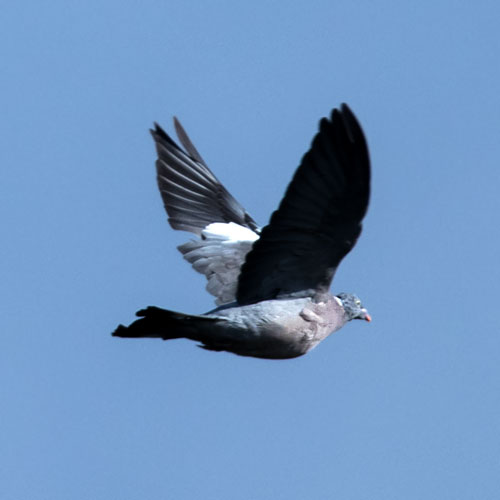 |
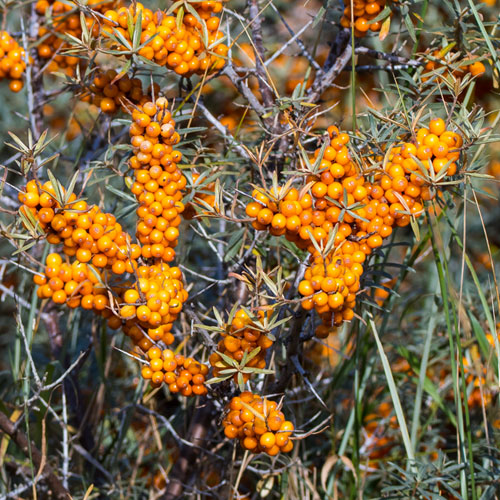 |
I spotted a few wildflowers in the grasslands around the Buckthorns,
namely Michaelmas
Daisy , Common Ragwort and Common
Storksbill . Unfortunately since time was pressing I
had to return to the car. On my way I met a Ruby
Tiger Moth caterpillar crossing the path.
| Michaelmas
Daisy |
Common Ragwort |
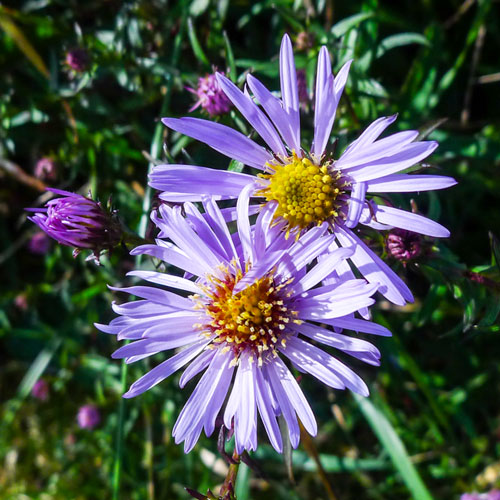 |
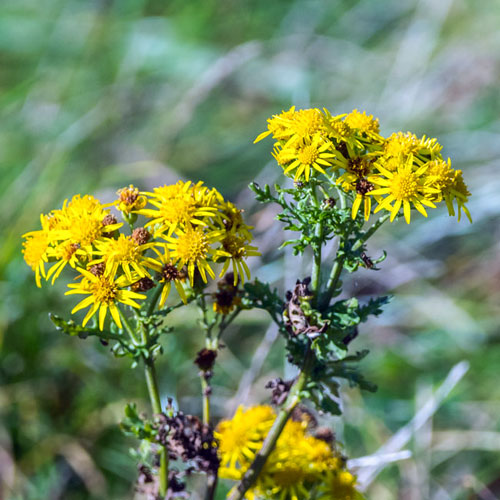 |
| Common Storksbill |
Ruby Tiger Moth caterpillar |
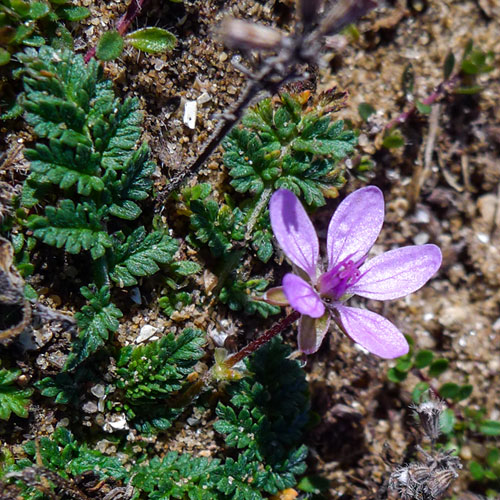 |
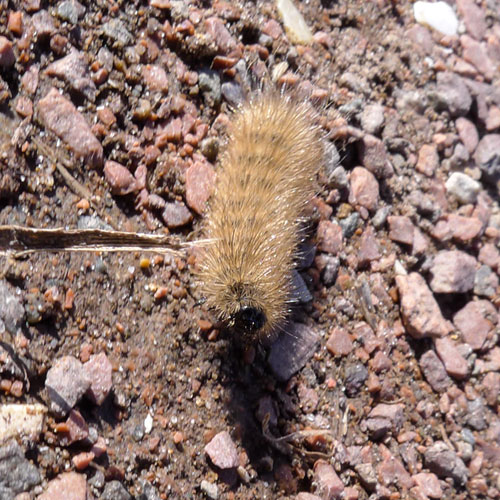 |
I passed a Hawthorn bush when I heard the sound of Goldfinches behind
me. I turned to find the
bush and path were packed with at least 50 small Goldfinches
preening and feeding. I hid
behind another bush and fired off a fair few shots of the busy wee
birds. Eventually the flock were
put up by some walkers.
Dominating my walk back to the bridge was a view of North
Berwick Law. It is a well
walked, conical hill topped with crossed whale bones that overlooks the
East Lothian town.
As I crossed the wooden bridge a Curlew was calling, but it’s
call was soon drowned out by lowflying Pink-footed Geese. I noticed a
white bird a couple of hundred metres away on the banks of
the burn. It was a Little
Egret. To my delight it flew towards and over the bridge
before
landing on the salt marsh to the west of the car park.
| Curlew |
Pink - footed Goose |
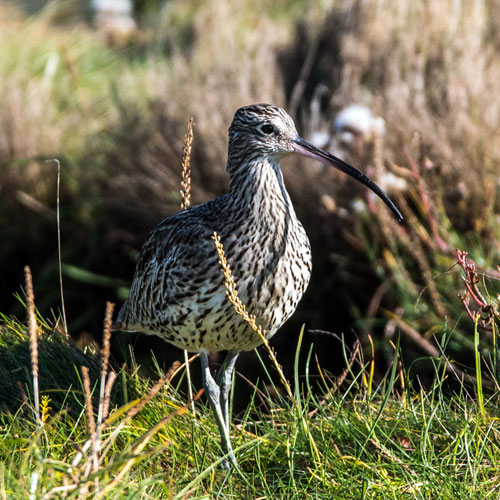 |
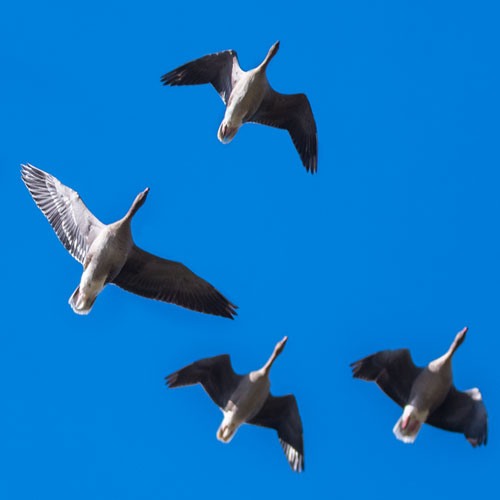 |
Very satisfied with my haul of sightings I decided to have my lunch as
I sat in my car. As I was
eating my sandwich I was surprised by a Birch
Shieldbug crawling over my sandwich box.
Of course I paused my lunch to fetch my LUMIX LX5 for a quick shot of
the bug (which I carefully
placed in nearby shrubbery. I’m glad I
“carefully” ridded myself of the Shieldbug since
their
alternative name is “stinkbugs” due to their tactic
of emitted fowl-smelling fluid to deter predators.
My fun for the day wasn’t quite over. At my next stop at a
nearby park there were fungi growing in
the short grass: Common Inkcap and Shaggy Inkcap. And to round things
off, when I returned to
my car I found a White-tailed Bumblebee crawling up my scarf. Once
again the macro mode on
my LUMIX LX5 got a workout. I was certainly attracting the
creepy-crawlies.
| Birch Shieldbug |
Common Inkcap |
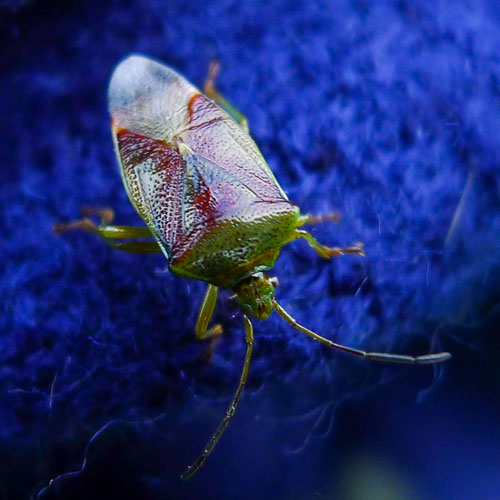 |
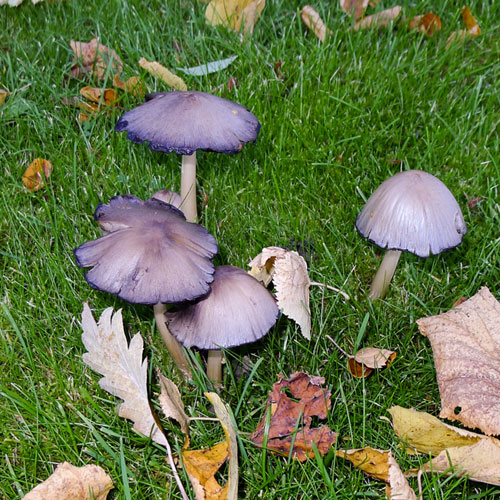 |
| Shaggy Inkcap |
White - tailed Bumblebee |
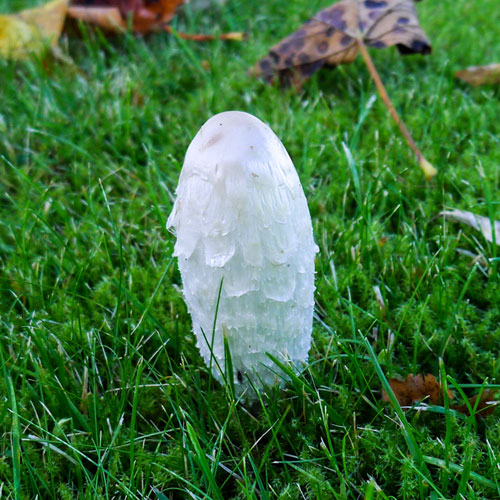 |
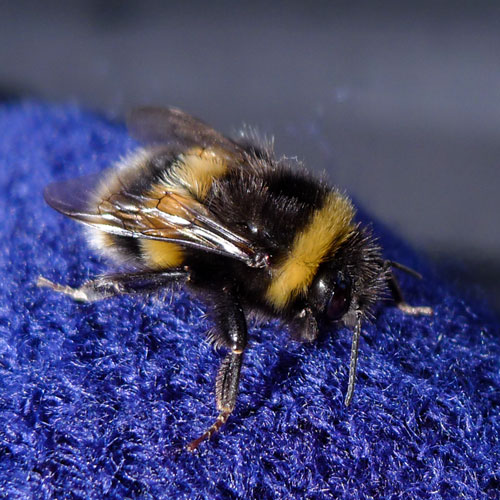 |
Week ending 4th October 2020: Musselburgh
It
was an easy choice this week since only the Lothians were predicted to
be rain-free on Sunday.
Clouds with sunny intervals were to be expected at Musselburgh and that
sounded good enough
for me. I parked at the Levenhall Links car park and made my way to the
Scrapes via the
“promenade”. My first capture was of a passing Kestrel
leaving the east end of the
Scrapes. I’d see him again though. From the sea wall I noted
that the tide was rising to cover the
wee sandy beach. I got shots of a Black-headed Gull and a 1st year
Herring Gull, and, close in, a
pair of Shags were diving for fish.
| Kestrel |
Black - headed Gull |
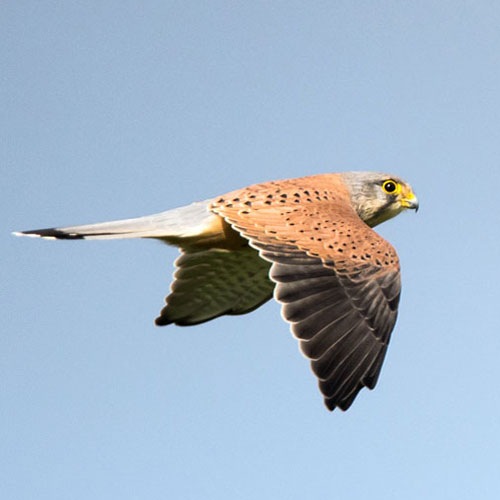 |
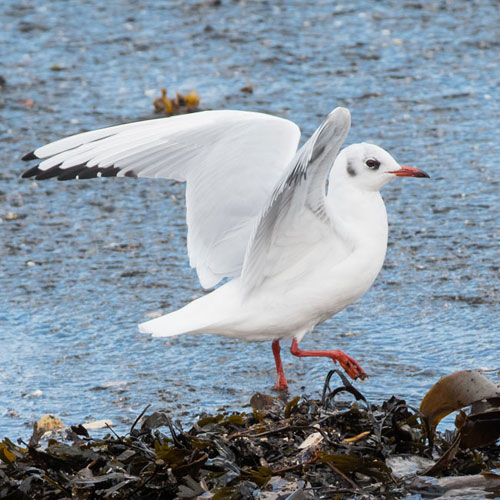 |
| 1st Cycle Herring Gull |
Shag |
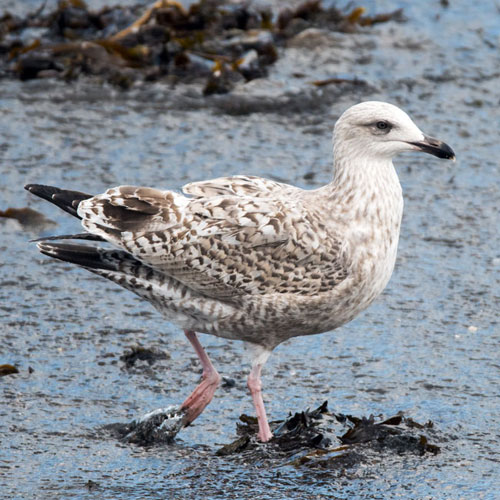 |
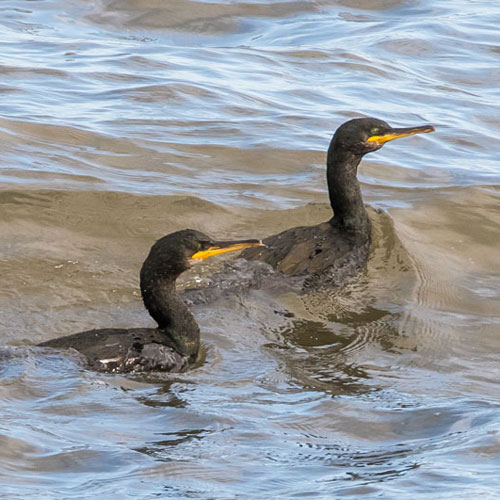 |
My first view of the Scrapes left me very optimistic as it was well
populated with birds, with more
pouring in. Bar - tailed
Godwits and Curlew, Canada Geese and, of course,
Oystercatchers
filled the sky above the reserve.
| Bar-tailed Godwits |
Curlew |
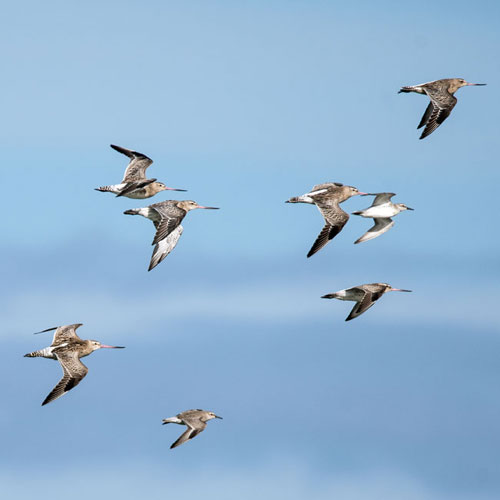 |
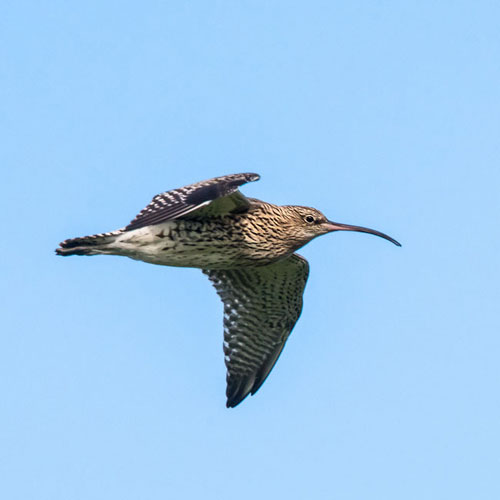 |
| Canada Goose |
Oystercatcher |
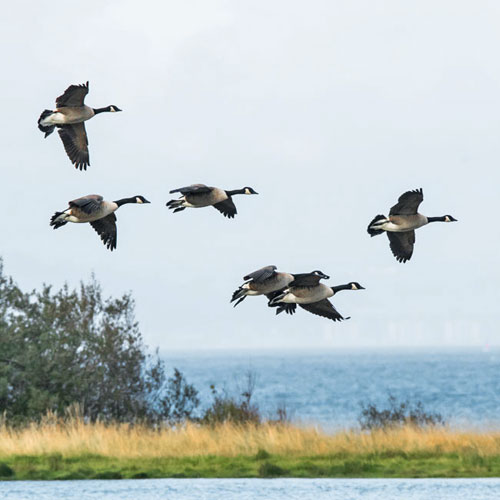 |
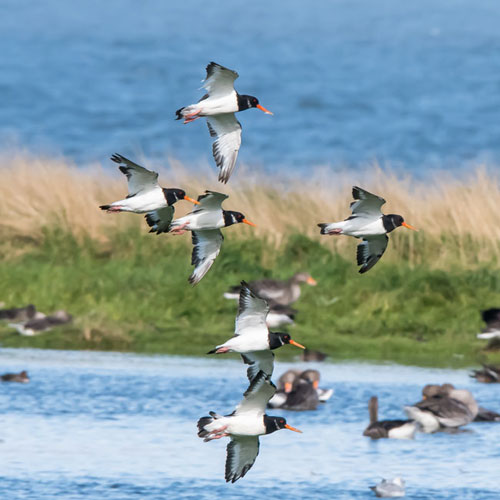 |
Also filling the skies, somewhat higher than the birds of the Scrapes,
were frequent passes of
visitors from Greenland or Russia, literally thousands of noisy
Barnacle Geese . I did though
also spot four Barnacles on the Scrapes.
The east-most scrape was occupied predominately by Lapwings
. Every so often they
would take off, triggered usually by an unseen threat. Their broad
wings allow them to perform
unpredictable aerobatics which makes them beautiful birds to watch in
flight, both as a flock and
individually. More direct fliers that made a whistle stop visit around
and through the reserve were Knot.
It was fascinating to see how these rapid birds managed to manoeuvre as
one.
Next I scanned the area about 100m in front of the rightmost hide and
thought I’d found a pair of
Dunlins, however one of the birds turned out to be a juvenile Curlew
Sandpiper. Nearer the
hide there were Redshanks and Crows foraging at the waters edge.
| Dunlin |
Curlew Sandpiper |
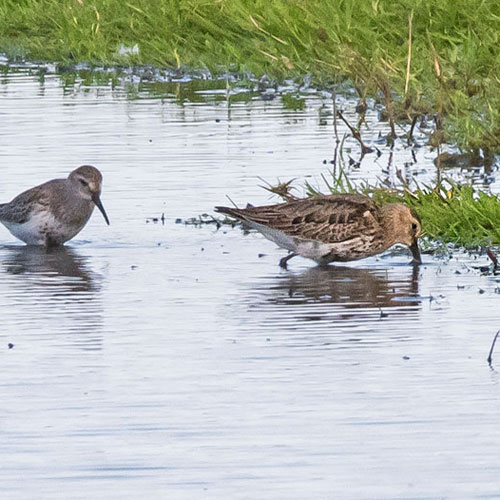 |
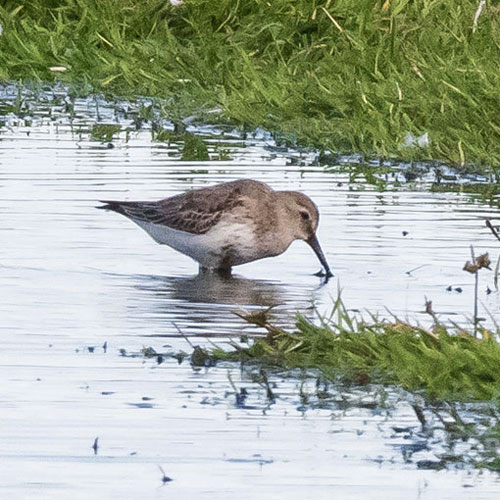 |
| Redshank |
Carrion Crow |
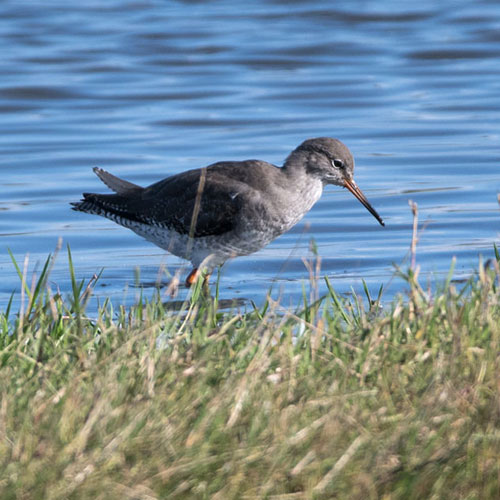 |
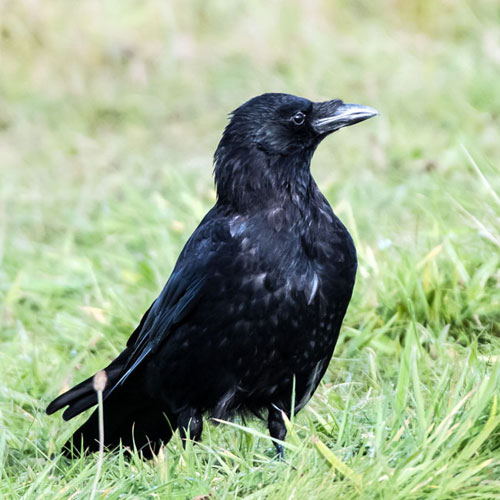 |
I got closer views of the Canada and Greylag Geese, but these were
interrupted when the Kestrel
I’d seen earlier flew in and started hovering close to the
hide. I managed some nice shots until
the crows chased it off before it could catch any prey. Just as I was
leaving the reserve to head for
the Esk mouth I noticed that there were some Wigeon in one of the
distant scrapes.
| Canada Goose |
Greylag Goose |
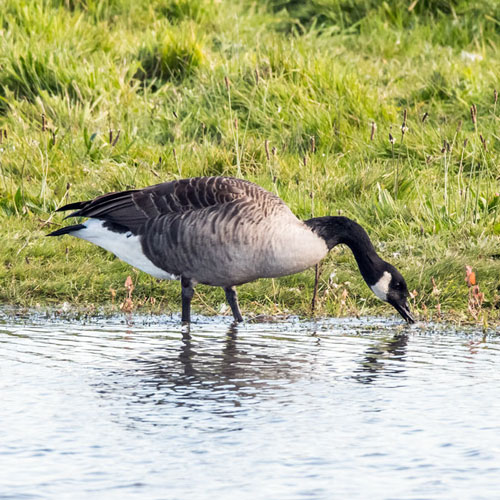 |
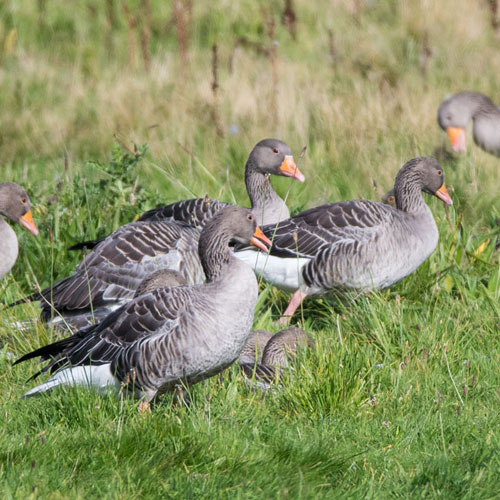 |
| Kestrel |
Wigeon |
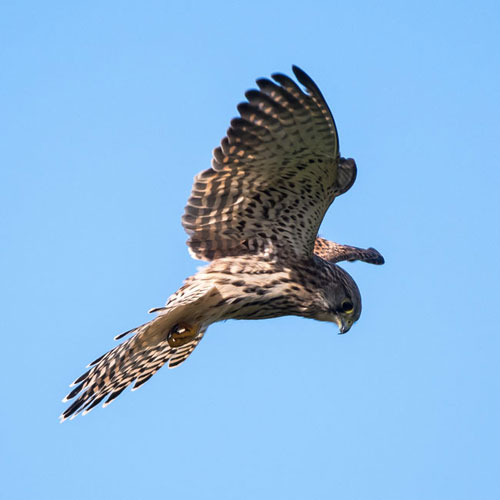 |
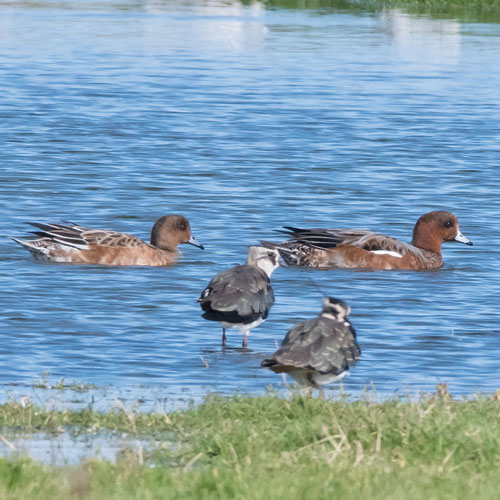 |
At the mouth of the River Esk I was delighted to see three Whooper
Swans not long in from
Iceland. As I photographed them from the side of the river, a Cormorant
surfaced about 10m from
me. Then a Canada Goose paddled across the river towards me. The poor
bird seemed to have
damaged wings, probably a condition known as “Angel
Wing”. There were birds along the
near bank of the river, mainly Mallards an Goosanders.
| Whooper Swan |
Cormorant |
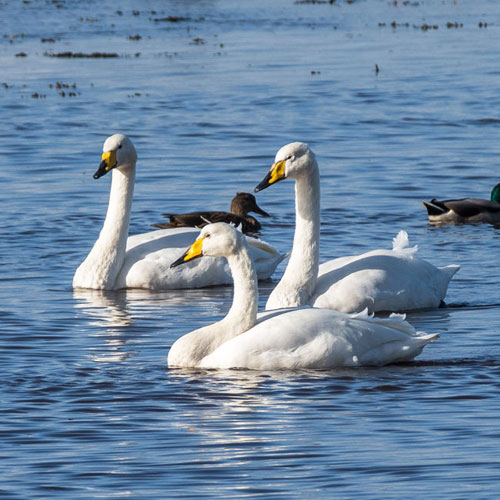 |
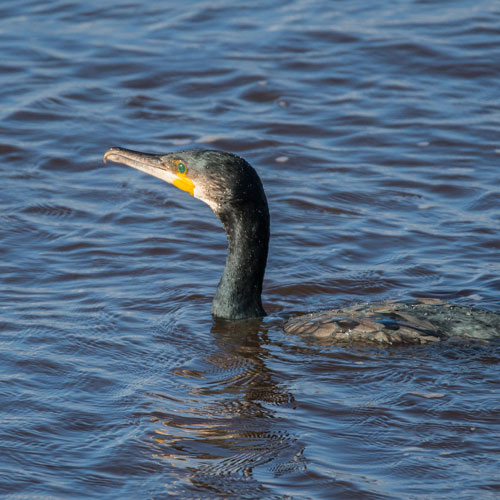 |
| Canada Goose |
Mallard |
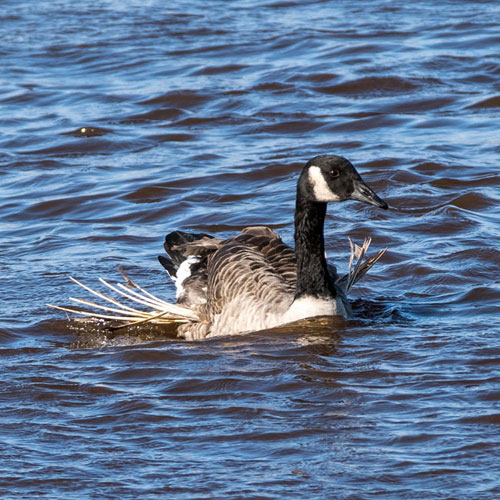 |
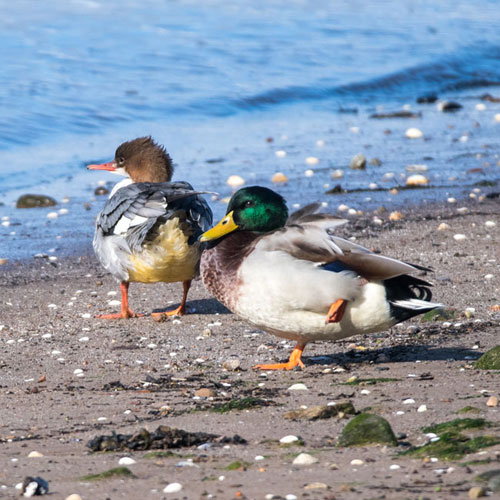 |
I came across a sizeable gathering of Turnstones rummaging along the
water’s edge. On the
water a pair of eclipse plumage Eiders were
diving for small crabs. My final shot of the visit
was of a bonny Redshank that was in with the Turnstones.
| Redshank |
Turnstone |
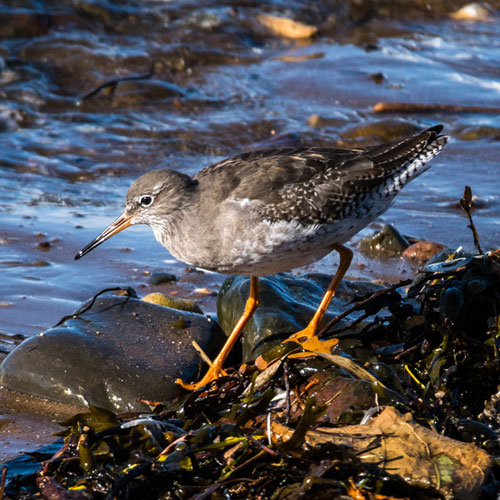 |
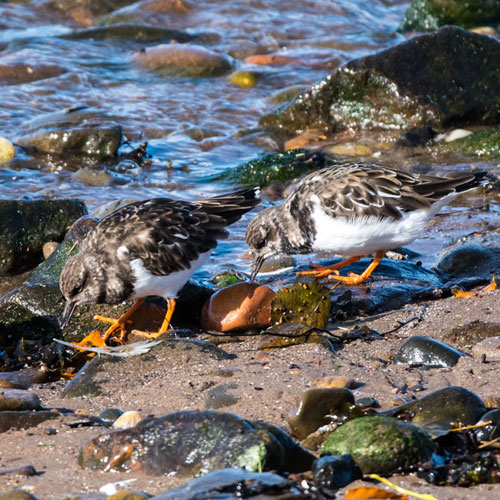 |
Musselburgh is always an enjoyable place to visit, but
sometimes the pickings can be on the slim
side. Sunday was not one of those days. I was very pleased with the
variety of birds I saw,
especially the Kestrel, geese and waders, and the weather was also
pleasing. So after a nice cup
of tea and a chocolate biscuit I drove home with a big smile on my face.
Highlights - October 2020
Is that another month
already? Must be since here are my latest choice of highlights. I hope
you
enjoy them. As usual they are not listed in the order they have been
taken, but according to a
series of themes.
WINGS
| Common Buzzard |
Curlew |
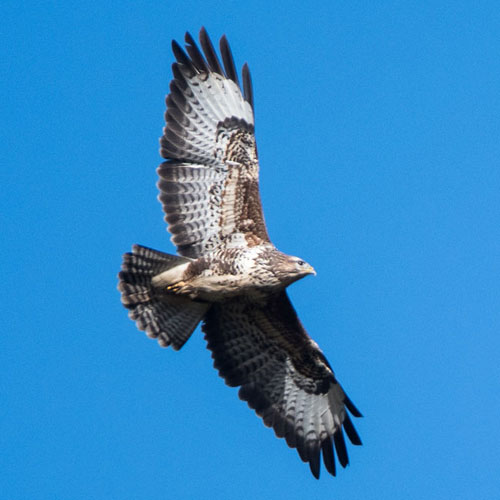 |
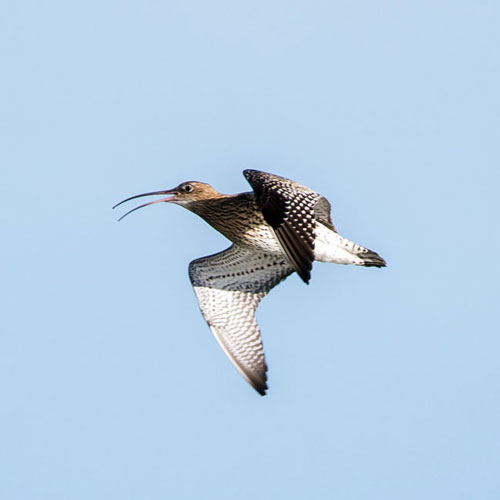 |
| Black - headed Gull |
Blue Tit |
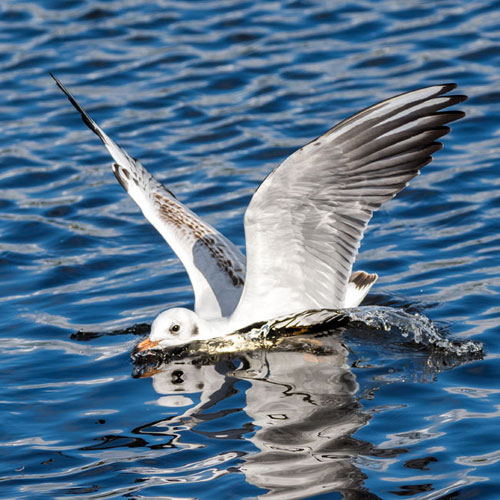 |
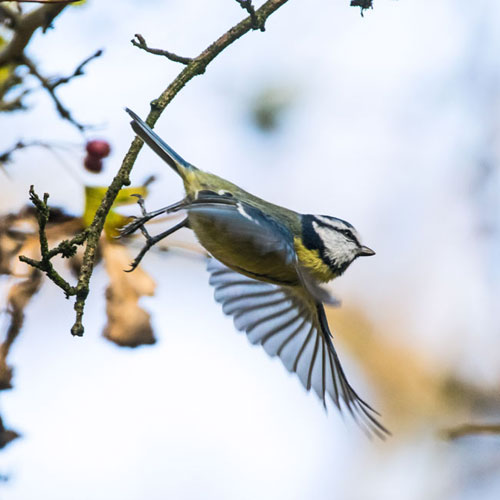 |
| Grey Heron |
Cormorant |
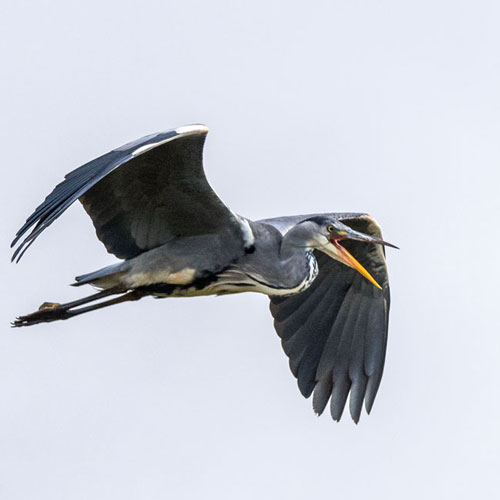 |
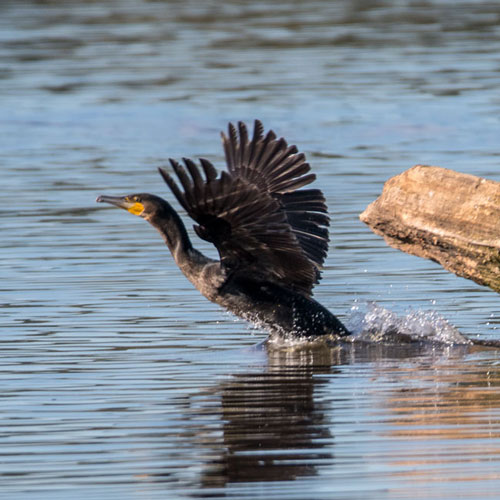 |
| Lapwing |
Little Egret |
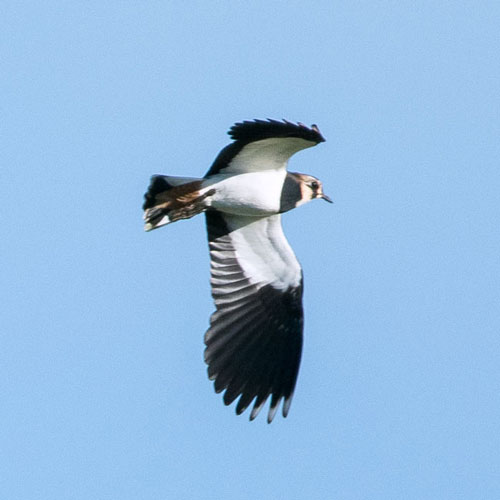 |
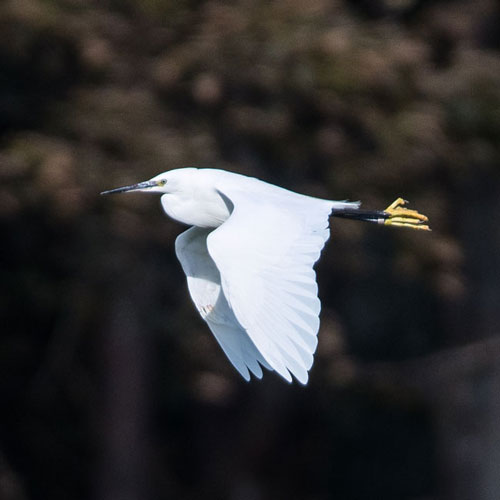 |
| Wood Pigeon |
Mallard |
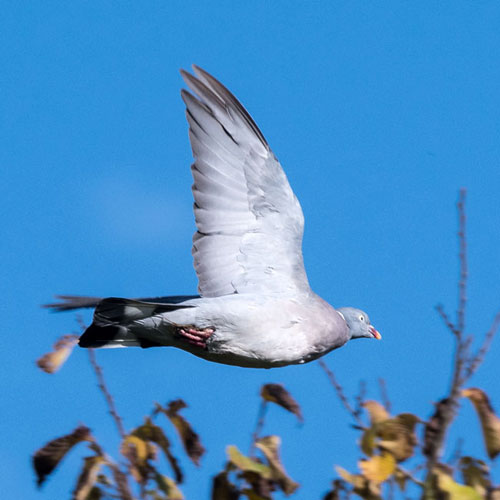 |
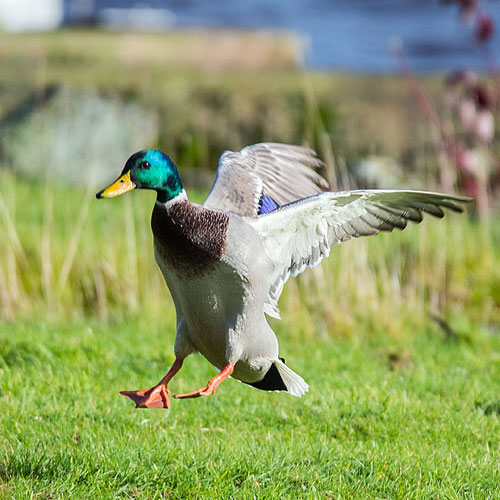 |
FUNGI
| Honey Fungus |
Clouded Funnel |
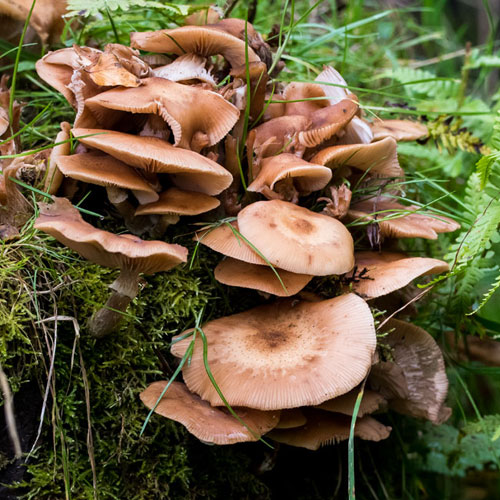 |
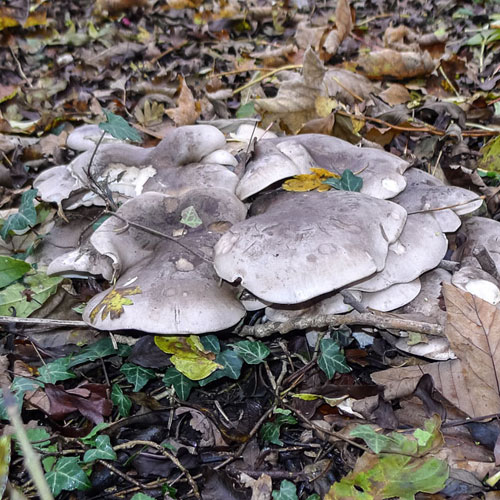 |
PORTRAIT
| Whooper Swan |
Robin |
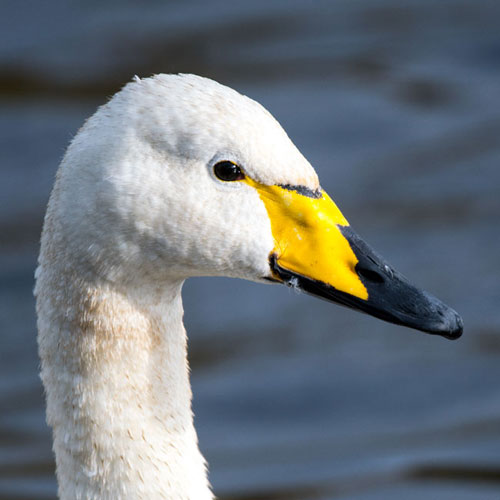 |
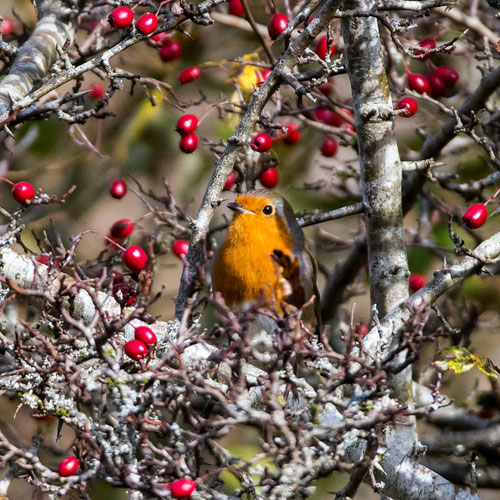 |
| Long - tailed Tit |
Grey Seal |
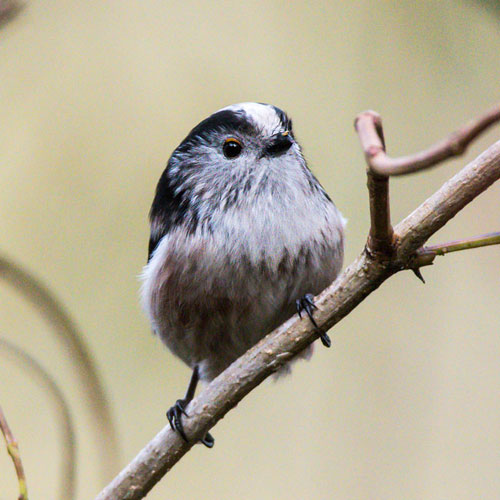 |
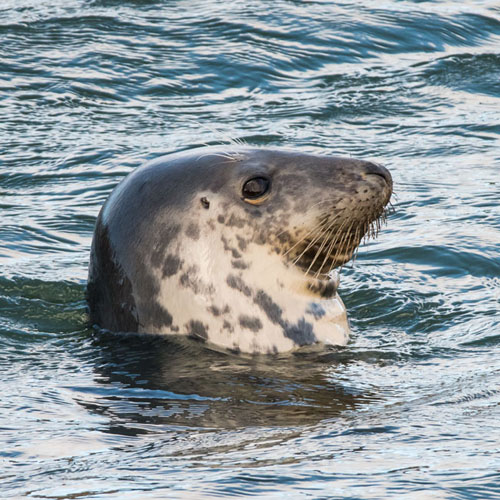 |
| Grey Heron |
Grey Squirrel |
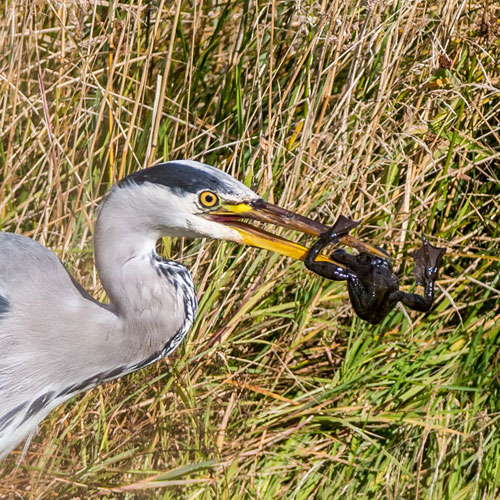 |
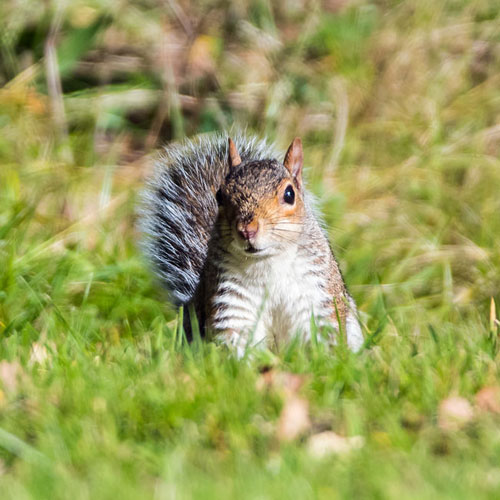 |
FLOCKS
| Bar - tailed Godwit |
Barnacle Goose |
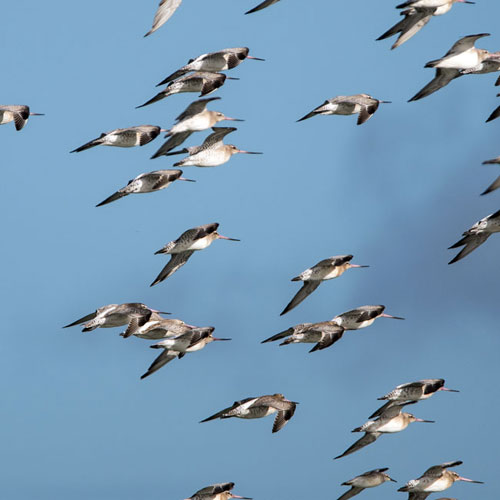 |
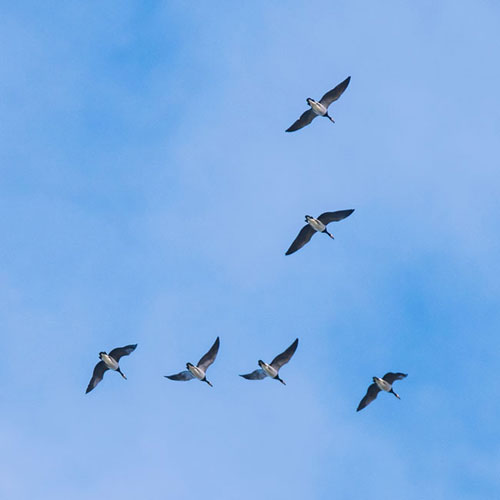 |
| Oystercatcher |
Gadwall |
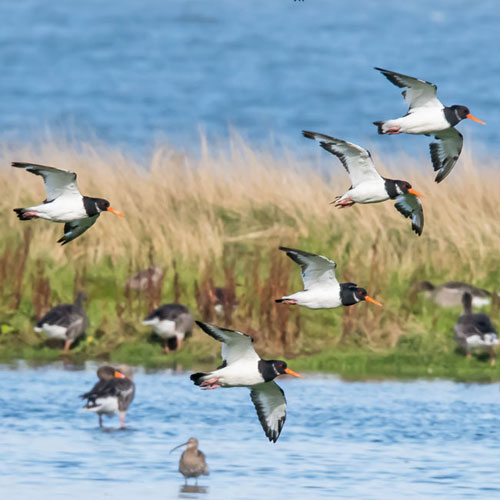 |
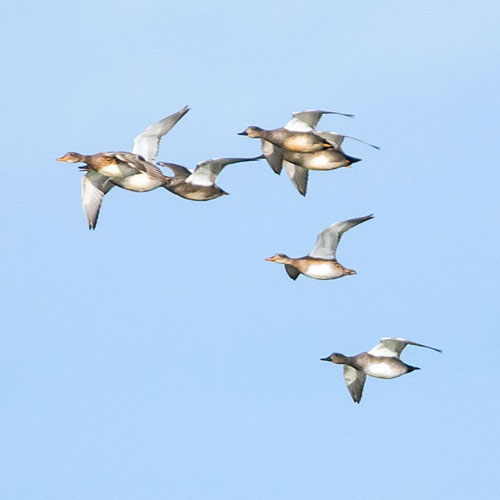 |
| Knot |
Lapwing |
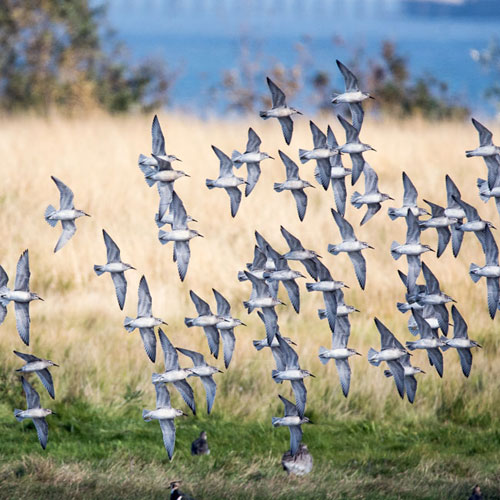 |
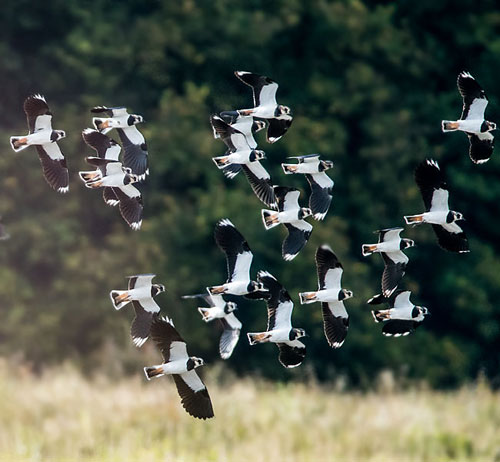 |
| Barnacle
Goose |
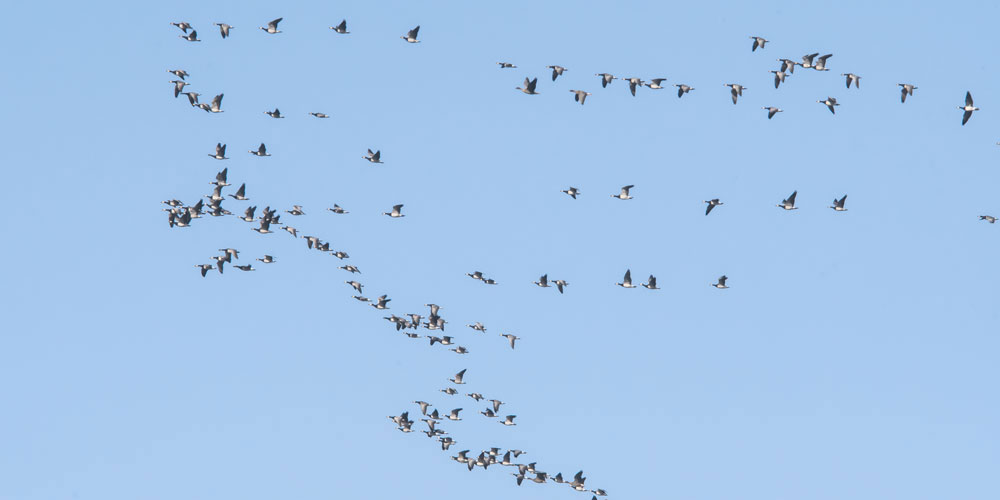 |
SHORE BIRDS
| Curlew |
Black - headed Gull |
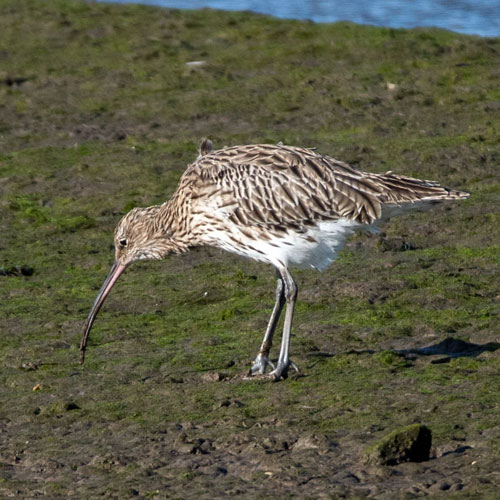 |
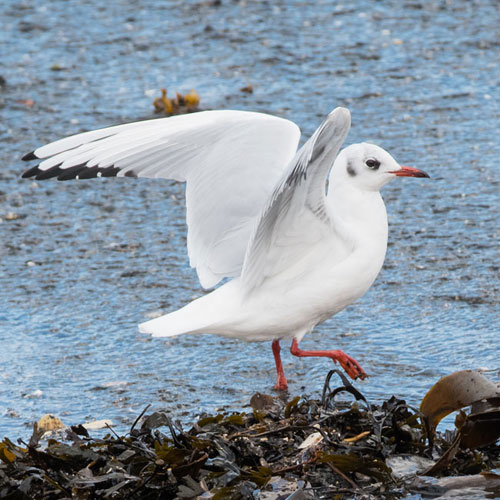 |
| Eider in Eclipse plumage |
Goosander in Eclipse plumage |
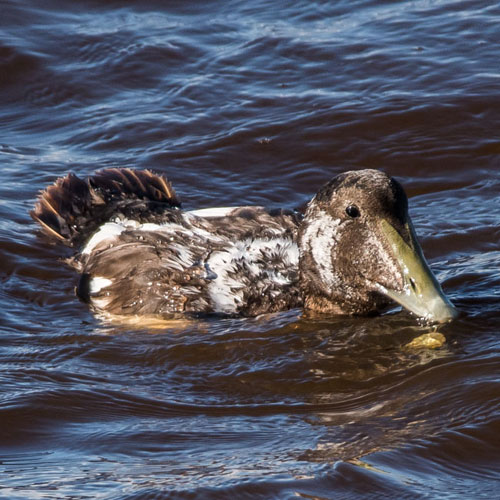 |
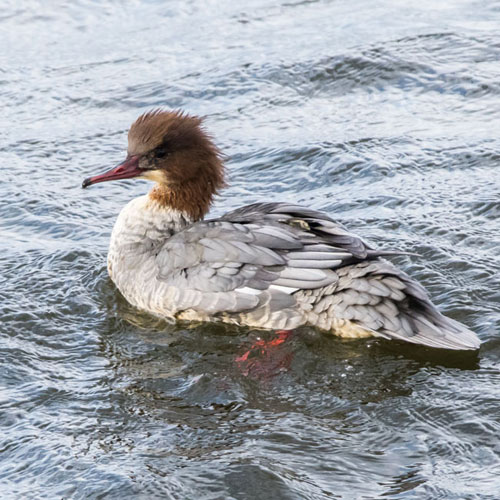 |
| Shag |
Turnstone |
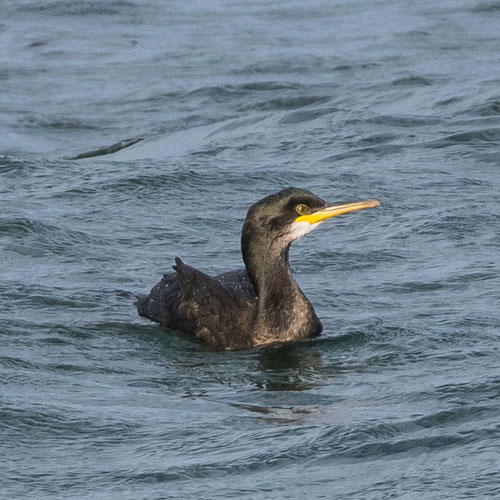 |
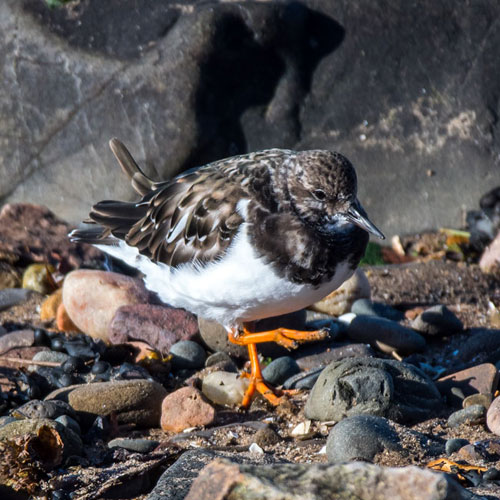 |
INSECTS
| Hoverfly - Eristalis arborustrum |
Birch Shieldbug |
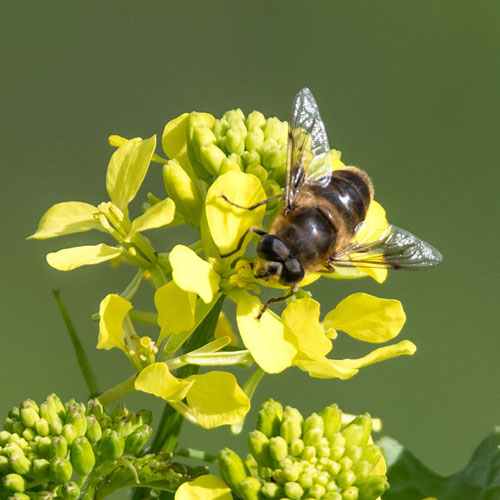 |
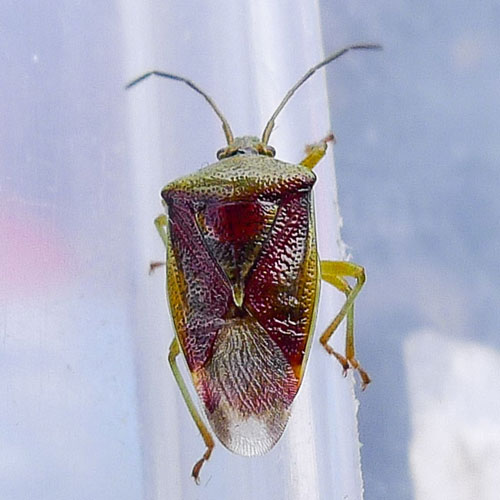 |
PERCHING BIRDS
| Blue Tit |
House Sparrow |
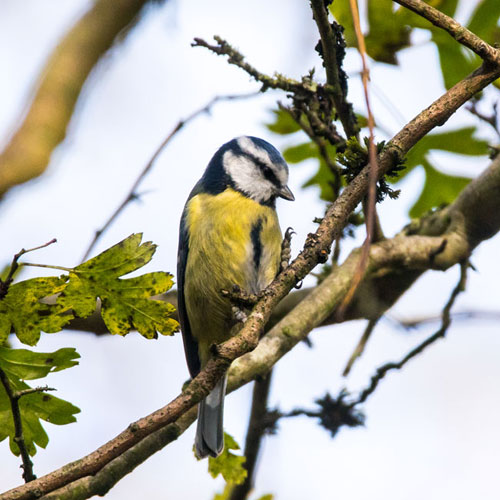 |
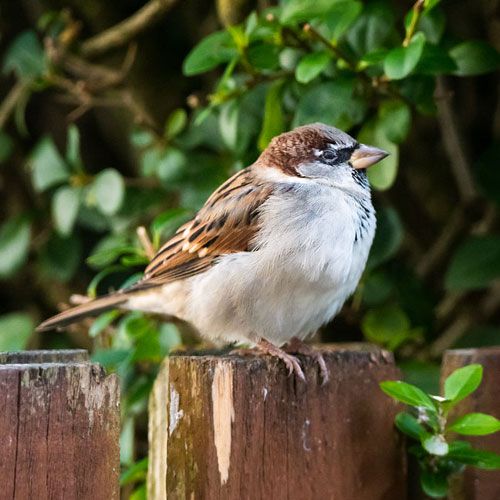 |
| Wren |
Chaffinch |
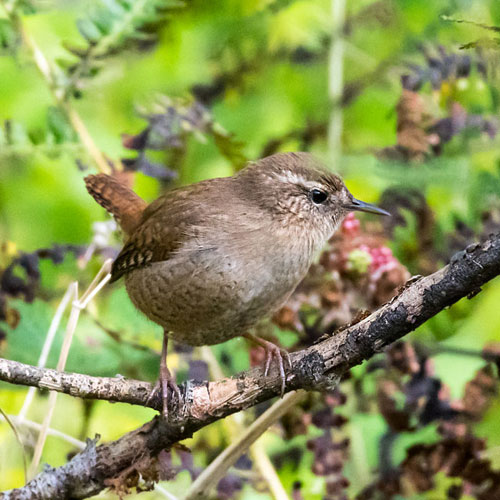 |
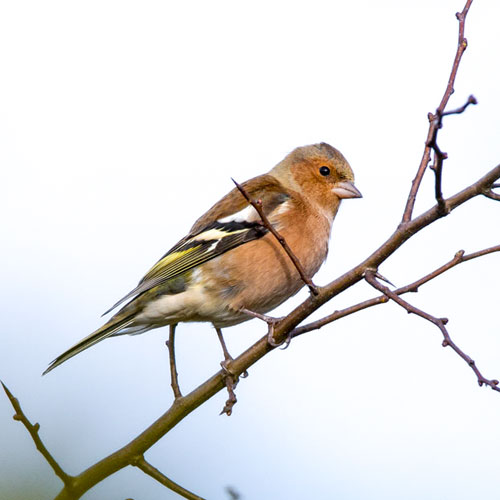 |
ON THE WATER
| Canada Goose |
Little Grebe |
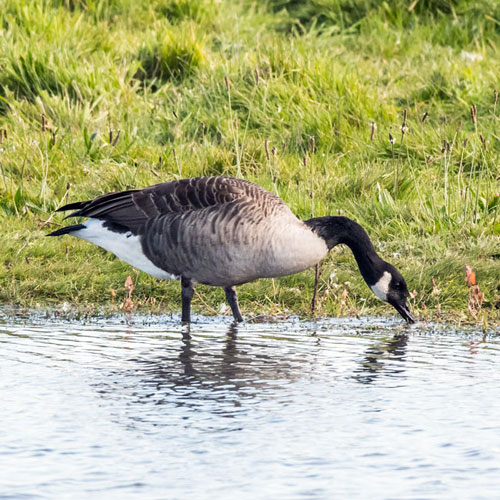 |
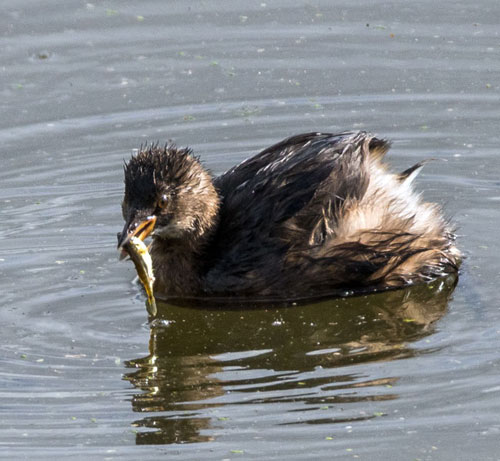 |
| Greylag Goose |
Lapwing |
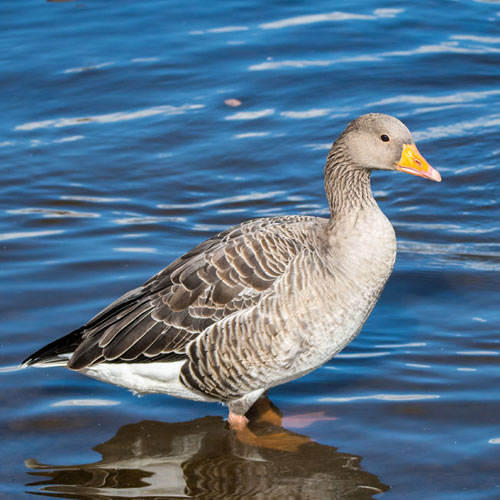 |
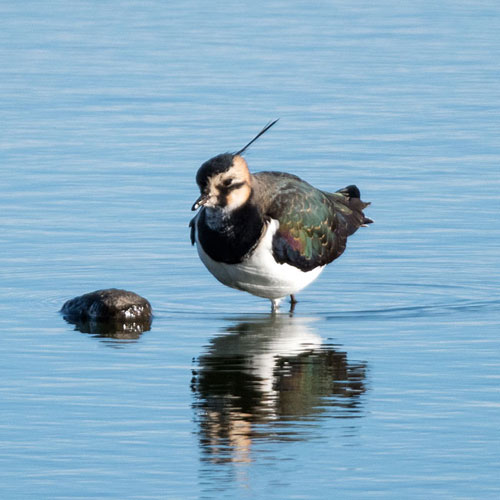 |
| Mallard |
Moorhen |
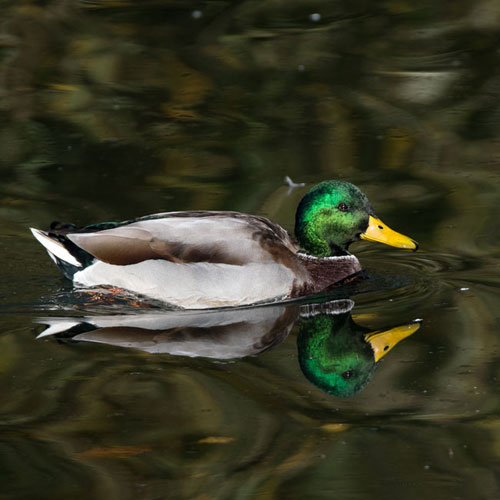 |
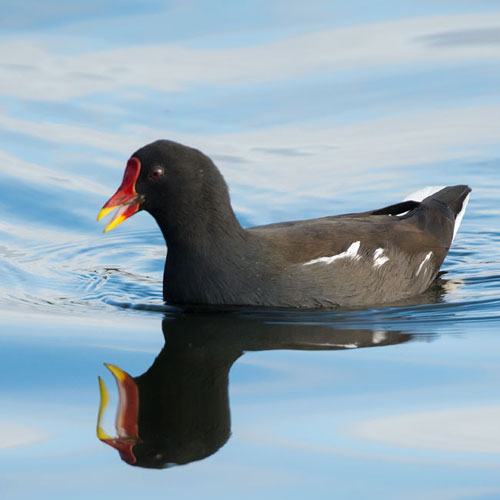 |
| Mute Swan |
Velvet Scoter |
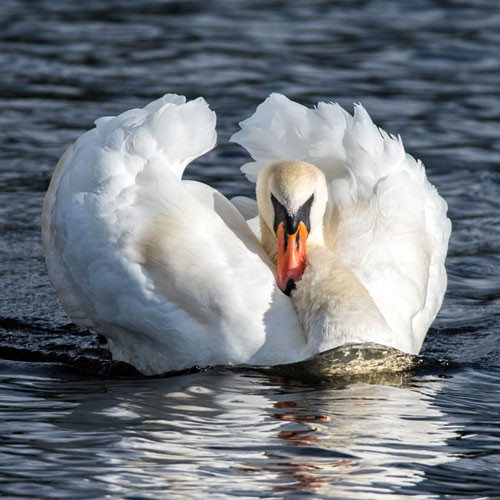 |
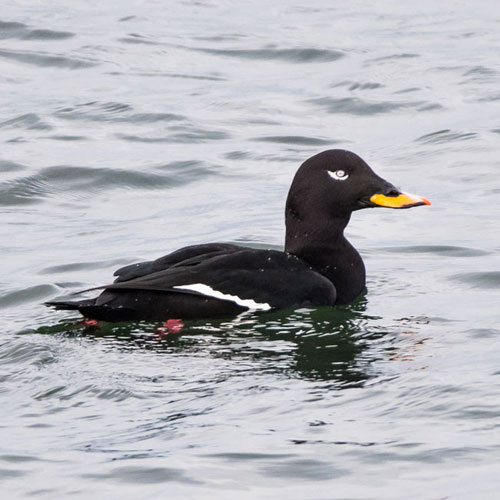 |
Back To Top
|

